

Nalanda University History, Library, Destruction and Reconstruction
Nalanda, an ancient center of higher learning in Bihar, India, holds a remarkable history spanning from 427 to 1197 AD.
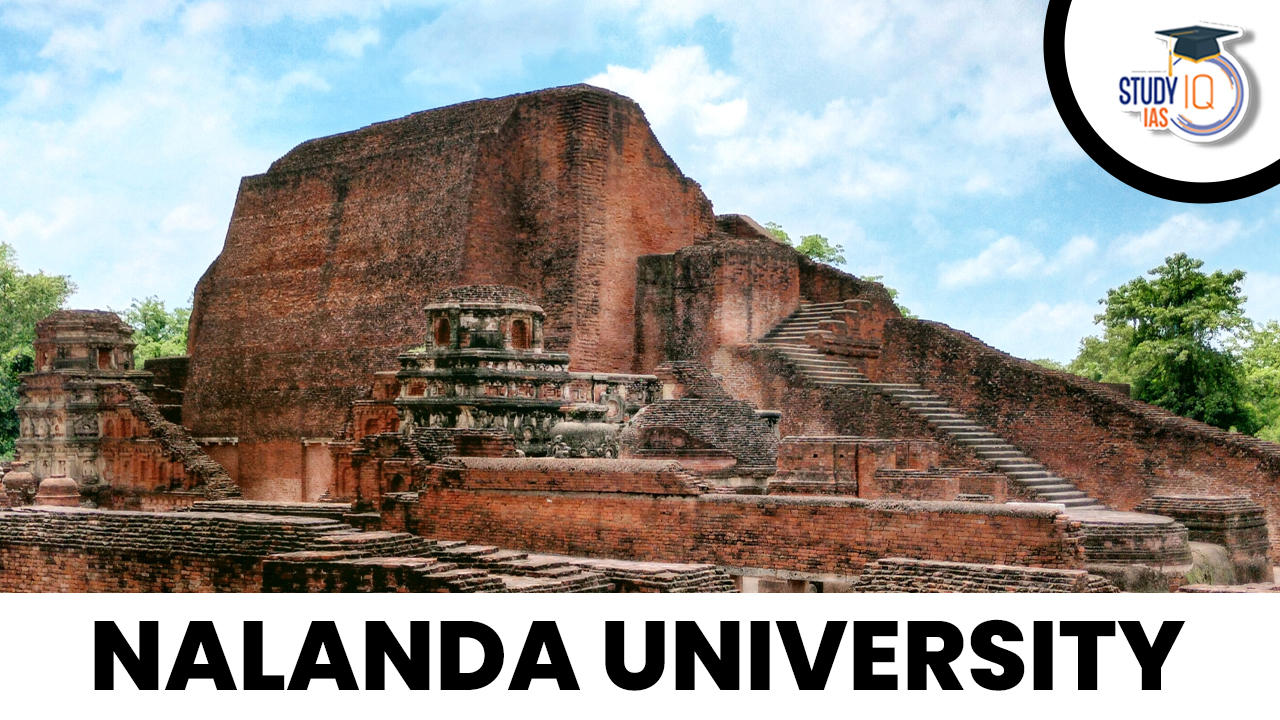
Table of Contents
Nalanda, an illustrious institution of ancient India, stands as a historic epicenter of advanced education located in Bihar, India. Established in AD 427 in the northeastern part of India, near the present-day southern border of Nepal, this renowned university continued its educational legacy until AD 1197. While its primary focus lay in the realm of Buddhist studies, it also offered a wide spectrum of education, encompassing fine arts, medicine, mathematics, astronomy, politics, and military strategy. This article serves as a comprehensive exploration of Nalanda University.
History of Nalanda University
Nalanda, an ancient center of higher learning in Bihar, India, holds a remarkable history spanning from 427 to 1197 AD. Founded in the 5th century AD, this prestigious institution, situated in northeastern India not far from the current southern border of Nepal, stood as a beacon of knowledge and wisdom.
Initially dedicated to Buddhist studies, Nalanda University evolved over time to encompass a diverse curriculum, including fine arts, medicine, mathematics, astronomy, politics, and the art of warfare. Its sprawling campus featured eight separate compounds, ten temples, meditation halls, classrooms, serene lakes, and lush parks.
Who Built Nalanda University?
Nalanda University was founded during the reign of the Gupta dynasty by Kumaragupta I, often referred to as Kumaragupta I (also known as Kumaragupta the Great). Kumaragupta I was a notable Gupta emperor who ruled during the 5th century CE. He is credited with the establishment of Nalanda University in Bihar, India, around the early 5th century AD. Kumaragupta I’s patronage and support played a crucial role in the foundation and development of this prestigious institution. However, it was under the patronage of his successors, particularly King Harsha, that Nalanda flourished and reached its zenith. The university received generous grants and support from various rulers, which contributed to its growth and reputation.
Why Nalanda University is Famous?
Nalanda University gained fame not only for its sheer size but also for its commitment to academic excellence. It boasted a vast library, known as the “Dharma Gunj,” which housed countless scrolls, manuscripts, and texts from different parts of the world. This library was a treasure trove of knowledge and played a pivotal role in the dissemination of wisdom across borders.
Moreover, Nalanda was home to renowned scholars such as Nagarjuna, Aryadeva, and Dharmapala, whose contributions to Buddhism and other fields of study are still revered today. The university’s intellectual and cultural exchange between scholars of different backgrounds enriched its academic environment.
Attacks on Nalanda University
Nalanda University, a symbol of ancient Indian knowledge and scholarship, faced two notable attacks during its history.
- The first attack occurred between 455 and 470 AD when the Hunas, a Central Asian tribal group, invaded Nalanda during the reign of Emperor Samudragupta of the Gupta Empire. The motive behind this attack was primarily plunder, as the Hunas sought to loot the university’s valuable resources. Although the damage was not severe, Skanda Gupta, another Gupta Emperor, re-established the university, and during his reign, the renowned Nalanda library was founded.
- The second attack transpired in the early 7th century when Goudas Rajvansh, the emperor of Bengal, targeted Nalanda due to political tensions with Emperor Harshavardhana of Kannauj. The attack was motivated by political rivalry, leading to some destruction. However, Harshavardhana’s efforts led to the university’s restoration, enabling Nalanda to continue its mission of global knowledge dissemination. These incidents, while disruptive, underscore Nalanda’s enduring legacy as a center of learning.
Ancient Nalanda University’s Destruction
In 1193 AD, Nalanda University suffered a devastating attack by Bakhtiyar Khilji, a general serving under Qutubuddin Aibak. Unlike previous attacks on the university, this invasion was particularly fatal, and it marked the end of Nalanda’s prominence as a center of learning.
The motivation behind Bakhtiyar Khilji’s assault on Nalanda was not political but rather personal. It is recounted that Khilji was in poor health and had sought medical help from various practitioners without success. Desperate for a cure, he turned to Rahul Sri Bhadra, the principal of Nalanda University at the time, who successfully treated him. However, Khilji’s sense of insecurity grew as he felt threatened by the knowledge possessed by Indian scholars, particularly in the field of Ayurveda. In an attempt to eliminate this perceived threat, he decided to destroy Nalanda University.
The destruction wrought by Bakhtiyar Khilji’s attack was catastrophic. His primary target was the university’s library, which housed an astonishing collection of approximately 90 lakh (9 million) books and manuscripts. He set fire to the library, and historians estimate that it took three months to burn down this repository of knowledge completely. In addition to the destruction of the library, Bakhtiyar Khilji mercilessly killed the monks and scholars residing within the university. His intent was to prevent the transmission of knowledge from one generation of scholars to the next.
The devastation inflicted upon Nalanda University during this attack was so profound that it marked the end of an era. Subsequent rulers were unable to restore the institution to its former glory, and the flow of knowledge from Nalanda came to a tragic and irreversible halt. This tragic event remains a poignant reminder of the fragility of human knowledge and the consequences of cultural and intellectual destruction.
Nalanda University Library
The library of the ancient Nalanda University is referred to as Dharmaganja (also written as Dharma Gunj) by traditional Tibetan sources, and loosely translates to “Treasury of Truth.”This grand edifice had the remarkable capacity to house an astounding 90 lakh (9 million) books and manuscripts. Such was its vastness that during the devastating invasion led by Bakhtiyar Khilji, it tragically took three long months for this immense repository of knowledge to be completely consumed by flames. The loss of Dharma Gunj and its invaluable collection remains a somber testament to the destruction of an irreplaceable treasure trove of ancient wisdom and scholarship.
Nalanda University Reconstruction
The reconstruction of Nalanda University in the modern era is a remarkable and ambitious endeavor aimed at reviving the legacy of this ancient center of learning. Here is an overview of the reconstruction of Nalanda University:
- Idea and Inception: The idea of reviving Nalanda University was first mooted by the former President of India, Dr. A.P.J. Abdul Kalam, in 2006 during his address to the Bihar State Legislative Assembly. Simultaneously, the Singapore government proposed the “Nalanda Proposal” to the Indian government, suggesting the re-establishment of Nalanda as a prominent educational institution.
- Government Initiatives: The Government of India, along with the State Government of Bihar, played a pivotal role in the reconstruction of Nalanda University. A suitable location for the new university campus was identified, comprising 450 acres of land at the base of the scenic Rajgir Hills in Bihar.
- International Support: Recognizing the historical significance of Nalanda and its potential as a modern center of learning, leaders from sixteen member states of the East Asia Summit (EAS) endorsed the proposal to re-establish Nalanda University. This international support underscored the importance of this initiative on a global scale.
- Nalanda University Act: The project took a significant step forward when the Nalanda University Act 2010 was passed in both houses of the Indian Parliament. This act provided the legal framework for the establishment and functioning of the new Nalanda University.
- Inauguration and Enrollment : In September 2014, Nalanda University opened its doors for the first batch of students, marking a historic moment after a gap of nearly eight centuries. The new university focused on interdisciplinary studies and global collaboration, embodying the spirit of its ancient predecessor.
- Contemporary Focus : The revived Nalanda University aims to carry forward the essence of the original institution by fostering an environment of diverse learning, research, and international cooperation. It focuses on a wide range of academic disciplines and encourages scholars and students from across the world to engage in collaborative knowledge creation.
- Recognition: Nalanda University has been recognized as an “Institute of National Importance” by the Government of India, highlighting its critical role in modern education and research.
The reconstruction of Nalanda University serves as a testament to the enduring value of education and the preservation of intellectual heritage. It strives to recapture the spirit of ancient Nalanda while adapting to the needs and challenges of the contemporary world, making it a symbol of India’s commitment to education and global collaboration.
Nalanda University’s current status
Nalanda University (NU) presently operates from its temporary campus located in Rajgir, Bihar. Additionally, the university utilizes the Rajgir International Convention Centre, an impressive facility equipped with diverse auditoriums, seminar rooms, an art gallery, a cinema theater, and a cafeteria.
Nalanda University’s legacy
Nalanda University’s legacy is a testament to intellectual excellence, interdisciplinary learning, and global outreach. Established in the 5th century AD, it attracted scholars and students from across the world, fostering cultural exchange and knowledge dissemination. The university’s legendary library, the “Dharma Gunj,” symbolized the importance of preserving and sharing knowledge. Despite facing adversity, Nalanda demonstrated resilience and continued its mission of education. Its revival in the modern era underscores the enduring legacy of this ancient institution. Nalanda’s influence inspires scholars and institutions worldwide, serving as a symbol of human curiosity and the pursuit of enlightenment.
Sharing is caring!
Nalanda University FAQs
Who established nalanda university.
Kumargupta founded Nalanda University in the 5th century A.D. He was also called Shakraditya.
What was the name of the library at Nalanda?
The library of the ancient Nalanda University is referred to as Dharmaganja (also written as Dharma Gunj).
Who destroyed Nalanda University?
In the 1190s the university was destroyed by a marauding troop of invaders led by Turko-Afghan military general Bakhtiyar Khilji.
Why the Nalanda University was so famous?
Nalanda's main importance comes from its Buddhist roots as a center of learning.
When was Nalanda University rebuilt?
The university came into existence on 25 November 2010, when the Nalanda University Act 2010 was implemented.
Greetings! I'm Piyush, a content writer at StudyIQ. I specialize in creating enlightening content focused on UPSC and State PSC exams. Let's embark on a journey of discovery, where we unravel the intricacies of these exams and transform aspirations into triumphant achievements together!

Leave a comment
Your email address will not be published. Required fields are marked *
Save my name, email, and website in this browser for the next time I comment.

- UPSC Online Coaching
- UPSC Exam 2024
- UPSC Syllabus 2024
- UPSC Prelims Syllabus 2024
- UPSC Mains Syllabus 2024
- UPSC Exam Pattern 2024
- UPSC Age Limit 2024
- UPSC Calendar 2024
- UPSC Syllabus in Hindi
- UPSC Full Form

Recent Posts
- UPPSC Exam 2024
- UPPSC Calendar
- UPPSC Syllabus 2024
- UPPSC Exam Pattern 2024
- UPPSC Application Form 2024
- UPPSC Eligibility Criteria 2024
- UPPSC Admit card 2024
- UPPSC Salary And Posts
- UPPSC Cut Off
- UPPSC Previous Year Paper
BPSC Exam 2024
- BPSC 70th Notification
- BPSC 69th Exam Analysis
- BPSC Admit Card
- BPSC Syllabus
- BPSC Exam Pattern
- BPSC Cut Off
- BPSC Question Papers
IB ACIO Exam
- IB ACIO Salary
- IB ACIO Syllabus
CSIR SO ASO Exam
- CSIR SO ASO Exam 2024
- CSIR SO ASO Result 2024
- CSIR SO ASO Exam Date
- CSIR SO ASO Question Paper
- CSIR SO ASO Answer key 2024
- CSIR SO ASO Exam Date 2024
- CSIR SO ASO Syllabus 2024
Study Material Categories
- Daily The Hindu Analysis
- Daily Practice Quiz for Prelims
- Daily Answer Writing
- Daily Current Affairs
- Indian Polity
- Environment and Ecology
- Art and Culture
- General Knowledge
- Biographies
IMPORTANT EXAMS

- Terms & Conditions
- Return & Refund Policy
- Privacy Policy
Academia.edu no longer supports Internet Explorer.
To browse Academia.edu and the wider internet faster and more securely, please take a few seconds to upgrade your browser .
Enter the email address you signed up with and we'll email you a reset link.
- We're Hiring!
- Help Center

Nalanda: powerful then, powerful now.

2023, Buddhadharma Magazine, Spring 2023, 12-23.
This essay provides a popular account of the historical and religious significance of Nālandā university.
Related Papers
Agnik Bhattacharya
Dr. Pintu Kumar
This article has been published in 2010 by the Icfai University Journal of History and Culture. It talks about the cultural/everyday life of ancient Nalanda University, the oldest, largest organised Buddhist educational institution of the pre-modern India. It shows that there was a close relationship between the study and the veneration.
The Journal of the World Universities Forum
Śrī Nālandā Mahāvihāra was a symbol of monastic, organized and institutional learning in ancient India. It provided instruction to all in Buddhist religion and philosophy. Nationalist historians claimed that Nālandā's curriculum incorporated both religious and secular subjects and Medicine was one of the popular courses here. The present research critically examines this popular conception and investigates how popular was studied medicine at Nālandā. It seems that studies in medicine at Nālandā was not serious about religion and philosophy and concentrated on minor health problems of its monks and residents. The disciplined and simple life of residents keep them healthy and the medical studies did not play that much important role in the life of the campus.
Hualin International Journal of Buddhist Studies
Kashshaf Ghani
Nalanda University has been established with a vision of being a foremost international institution in India. It begun its academic activities from 2014. The University is posed to be a unique meeting ground for various branches of knowledge from across the globe. The article is an attempt at highlighting some of the primary ideas keeping which in mind the University was conceived, and which the academic community in Nalanda University is committed to pursuing as part of its teaching-learning programme.
Soraj Hongladarom
During its heyday from the fifth to the twelfth centuries C.E., Nalanda Monastery was one of the largest and most advanced knowledge producing and transmitting institutions in the world. Tens of thousands of monks came from many parts of India as well as various parts of Asia to study there. The monastery complex taught not only the teachings of the Buddha, but also subjects such as astrology, music, grammar, rhetoric, medicine, indeed the entire corpus of knowledge that was available in the world at that time. It is therefore not difficult to imagine that these intense academic activities included not only teaching of transmitted texts, but must also have included active interpretations of these texts, as well as very strong creative activities in producing new knowledge. Thus, in the attempt to search for the indigenous source of scientific and technological creativity for Asia, it is impossible to neglect the formidable contribution of Nalanda Monastery. In the proposed paper, I will discuss the role of the Monastery (or university) in knowledge production and refinement of technological capabilities. The paper will also focus on the philosophical and epistemological aspects of Mahayana Buddhism, especially on how the Doctrine of Emptiness (Śūnyatā) might have a bearing on how scientific and technological capabilities in Asia could be further developed.
The NSC Working Paper Series is published electronically by the Nalanda–Sriwijaya Centre of ISEAS- Yusok Ishak Institute © Copyright is held by the author or authors of each Working Paper. NSC Working Papers cannot be republished, reprinted, or reproduced in any format without the permission of the paper’s author or authors. Citations of this electronic publication should be made in the following manner: Mark E. Long, An Eighth-Century Commentary on the Nāmasaṅgīti and the Cluster of Temples on
Reading Religion
Arpita Mitra
RELATED TOPICS
- We're Hiring!
- Help Center
- Find new research papers in:
- Health Sciences
- Earth Sciences
- Cognitive Science
- Mathematics
- Computer Science
- Academia ©2024

Nalanda University, Nalanda: Unveiling the Architectural Marvel of Ancient Learning

Nalanda University, Nalanda – Archeological sites around India
Nestled in the serene landscapes of Nalanda, the ancient Nalanda University stands as a testament to the architectural and intellectual prowess of ancient India. This architectural marvel, with its roots dating back to the 5th century, continues to captivate the minds of historians, architects, and tourists alike. In this comprehensive exploration, we delve into the intricate details of Nalanda University, unraveling its architecture, archeology, and the allure it holds for modern-day travelers.
Architectural Splendor: A Glimpse into the Past
The architectural grandeur of Nalanda University is a fascinating journey into the ancient world of knowledge and enlightenment. Designed with meticulous precision, the university complex spans over 14 hectares and features a central axis aligned with the cardinal points. The layout reflects a systematic approach to planning, emphasizing the importance of symmetry and spatial organization.
Archaeological Insights: Unearthing the Past
Archaeological excavations have unearthed the remains of monasteries, classrooms, and living quarters, offering a glimpse into the daily life of scholars and monks who once roamed these hallowed grounds. The meticulous layout suggests an advanced understanding of architectural planning, with separate residential quarters, lecture halls, and meditation spaces.
Planning and Layout: An Intricate Tapestry of Knowledge
The planning of Nalanda University reflects a profound commitment to fostering an environment conducive to intellectual pursuits. The university comprises multiple complexes, each dedicated to a specific discipline of study. Lecture halls, libraries, and meditation spaces are strategically placed, fostering an atmosphere of scholarly exchange and contemplation.
Interior Design: Where Wisdom Resided
The interiors of Nalanda University, though largely lost to the ravages of time, are believed to have been adorned with intricate artwork and inscriptions. The living quarters of scholars featured austere yet functional designs, emphasizing simplicity and functionality over ostentation.
Urban Design: A City of Learning
Nalanda was not merely a university; it was a city dedicated to the pursuit of knowledge. The urban design incorporated open spaces, courtyards, and water features, creating a harmonious environment for intellectual exploration. The layout, with its careful consideration of natural elements, mirrors the ancient Indian philosophy of living in harmony with nature.
Facade Elegance: Architectural Aesthetics in Stone
The facade of Nalanda University, crafted from locally sourced materials, showcases the architectural finesse of the era. Intricately carved motifs, depicting scenes from daily life and religious iconography, adorned the exteriors. The use of local materials not only reflects sustainable architectural practices but also emphasizes a deep connection to the surrounding landscape.
Architectural Visionaries: Crafting a Legacy
Attributed to the Gupta and Pala dynasties, the architects behind Nalanda University remain anonymous, shrouded in the mists of history. However, their legacy endures through the enduring structures that have withstood the test of time. The architecture, characterized by a blend of Gupta and Pala styles, showcases a mastery of both form and function.
Attractions for Modern-day Travelers: A Journey Through Time
Today, Nalanda University stands as a UNESCO World Heritage Site, drawing tourists from around the globe. The site offers a captivating journey through the annals of history, with its well-preserved ruins and the palpable aura of ancient wisdom. Visitors can explore the excavated structures, marvel at the architectural details, and immerse themselves in the echoes of a bygone era.

Preserving the Legacy: Calls to Action
Preserving the architectural and archaeological heritage of Nalanda University is a shared responsibility. Advocacy for continued research, conservation efforts, and responsible tourism is essential to ensure that future generations can continue to marvel at this beacon of ancient knowledge.
In conclusion, Nalanda University stands as a testament to the intellectual and architectural prowess of ancient India. Its meticulous planning, elegant design, and enduring legacy make it a treasure trove for architects, archaeologists, and tourists seeking to unravel the mysteries of the past. As we navigate the corridors of Nalanda, we not only connect with history but also embrace the responsibility of preserving this architectural gem for generations to come.

Rethinking The Future (RTF) is a Global Platform for Architecture and Design. RTF through more than 100 countries around the world provides an interactive platform of highest standard acknowledging the projects among creative and influential industry professionals.

Lothal, Ahmedabad in Gujarat: Unveiling the Rich Heritage:

Kalibangan, Hanumangarh District of Rajasthan: Unraveling Architectural Marvels
Related posts.

Fernandez Architecture: Crafting Elegance and Minimalism in Architectural Excellence

Christ Hospital Joint and Spine Center, USA: Revolutionizing Healthcare Architecture

Buerger Center for Advanced Pediatric Care, USA: Elevating Pediatric Healthcare Architecture

The New Hospital Tower at Rush University Medical Center, USA: Redefining Healthcare Architecture Excellence

Teletón Infant Oncology Clinic, Mexico: A Paradigm of Healing Architecture

Pars Hospital, Iran: A Masterpiece of Architectural Ingenuity in Healthcare
- Architectural Community
- Architectural Facts
- RTF Architectural Reviews
- Architectural styles
- City and Architecture
- Fun & Architecture
- History of Architecture
- Design Studio Portfolios
- Designing for typologies
- RTF Design Inspiration
- Architecture News
- Career Advice
- Case Studies
- Construction & Materials
- Covid and Architecture
- Interior Design
- Know Your Architects
- Landscape Architecture
- Materials & Construction
- Product Design
- RTF Fresh Perspectives
- Sustainable Architecture
- Top Architects
- Travel and Architecture
- Rethinking The Future Awards 2022
- RTF Awards 2021 | Results
- GADA 2021 | Results
- RTF Awards 2020 | Results
- ACD Awards 2020 | Results
- GADA 2019 | Results
- ACD Awards 2018 | Results
- GADA 2018 | Results
- RTF Awards 2017 | Results
- RTF Sustainability Awards 2017 | Results
- RTF Sustainability Awards 2016 | Results
- RTF Sustainability Awards 2015 | Results
- RTF Awards 2014 | Results
- RTF Architectural Visualization Competition 2020 – Results
- Architectural Photography Competition 2020 – Results
- Designer’s Days of Quarantine Contest – Results
- Urban Sketching Competition May 2020 – Results
- RTF Essay Writing Competition April 2020 – Results
- Architectural Photography Competition 2019 – Finalists
- The Ultimate Thesis Guide
- Introduction to Landscape Architecture
- Perfect Guide to Architecting Your Career
- How to Design Architecture Portfolio
- How to Design Streets
- Introduction to Urban Design
- Introduction to Product Design
- Complete Guide to Dissertation Writing
- Introduction to Skyscraper Design
- Educational
- Hospitality
- Institutional
- Office Buildings
- Public Building
- Residential
- Sports & Recreation
- Temporary Structure
- Commercial Interior Design
- Corporate Interior Design
- Healthcare Interior Design
- Hospitality Interior Design
- Residential Interior Design
- Sustainability
- Transportation
- Urban Design
- Host your Course with RTF
- Architectural Writing Training Programme | WFH
- Editorial Internship | In-office
- Graphic Design Internship
- Research Internship | WFH
- Research Internship | New Delhi
- RTF | About RTF
- Submit Your Story
Looking for Job/ Internship?
Rtf will connect you with right design studios.

- Corrections
Nalanda University: An Ancient Indian Ivy-League Institution
Nalanda University boasted a campus with 9 million books and architecture so vast, it took 3 months to burn down completely. Read about the world’s oldest, cultural, and international university.

Western establishments like Oxford, Yale, Cambridge, Harvard, etc. have been sanctified for their education and guidance for the past two centuries. However, a thousand years prior to the worldwide colonization of Europeans, Asian centers of learning such as Nalanda Mahavihara of Magadha were renowned for their academic excellence. The architecture of the Buddhist monastic center was similar to our modern university towns, which provide lodging and boarding for their students.
Founded in 427 C.E., Nalanda Mahavihara , or Nalanda University, lasted for over 700 hundred years. It survived political waves, the rise and fall of civilizations, religious wars, and the birth of intellectual greats for almost a millennium before the Turks destroyed it.
Archeological Excavations At Nalanda University

In a 1917 notice by the Royal Asiatic Society of Great Britain and Ireland, archeologist David Spooner detailed the discovery of a 24-feet high wall, 600 clay tables, and 211 uniquely carved stone panels surrounding the Baladitya temple, situated in modern-day Bihar. The digging performed around a kilometer square of Nalanda district was counted as one of the most beautiful marvels of its time.
Antiquarian artifacts found on the Nalanda University site are categorized under daily use objects and bronze ritualistic materials. Hundreds of other archaeological shreds of evidence were dug up near Nalanda: clay seals, terracotta ornaments, and metal figurines of Hindu, Jain, and Buddhist icons. Symbols and panels from the Pala period, discovered by Dr. Spooner in 1915, are conserved at the Nalanda Museum.
Get the latest articles delivered to your inbox
Please check your inbox to activate your subscription.
A few manuscripts and inscriptions were also found during the excavation. Fleeing monks preserved the manuscripts by taking it with them. Three of them include Dharanisamgraha’s folios (1075 AD) displayed at the Los Angeles County Museum of Art, Ashtasahasrika Prajnaparamita is at the Asia Society center and 139 leaves and painted wooden pages are available at Yarlung Museum, Tibet.
The Origin Of Nalanda University

Legend has it that Nalanda University land was purchased for 10 kotis (old currency form) of gold pieces by five hundred merchants. They gifted the land to Lord Buddha, who preached under a Pāvārikāmbavana (mango grove of Pavarika) for several years. Another scholar writes that the university was founded by Kumaragupta I of the Gupta Dynasty (415-455 CE). The succeeding Gupta Emperors promptly invested in the religious and epistemic growth of the university. Under their reign, the building had eight monasteries, 11,000 cells, three libraries, and around 2000 pupils in attendance. The monks and students of the university survived on the generosity and grace of their contemporary rulers. Between 606-647 CE, Nalanda owned 200 villages nearby with the grace of many generations of Pala kings. The land allotted to the Indian monasteries attracted the Turk invasions in the next centuries.
A Monastic Center Of Buddhist Learning

Chinese monk Hiuen Tsang notes that the intellectual flow of knowledge flourished in Nalanda after the 3 rd or 4 th centuries AD. During his time as a student, 1510 teachers and 10,000 monks were present on the campus. Modern-day Indologists and archeologists predict that the number ranged somewhere between 1000 to 4000. The monks at the university practiced a set of Buddhist customs , rituals, and traditions to honor Lord Buddha. Chinese philosopher I-Sing narrates the proceedings: every morning, they began with beating a gong, and in the evening, the monks gathered around to perform chaityavandan .
Tibetan scholar Taranatha writes in his travelogues about the three-building, nine-story library of Nalanda University, with a volume of 9 million manuscripts. The ancient university has birthed several intellectual greats in history. Eventually, in opposition to the university’s ideological inclination towards tantric doctrines and magic rites of Mahayana Buddhism, several competing mahaviharas cropped up in the area. To reproduce the university’s legacy, dynastic Pala rulers financed Vikramshila and Taxila, the new knockoffs of Nalanda, and urged the monks and potential student crowd to transfer there.
The Sacredness Of Education And Teaching

Nalanda University accepted students of reaching nationalities, including from neighboring regions such as Korea, Japan, China, Indonesia, and even farther countries like Iran, Greece , Mongolia. The center of learning provided a mixture of courses in medicine, arts, philosophies, and religious studies; the list included specialties in literature , astrology, psychology, law, astronomy history, mathematics, economics, and medical science.
The institute had higher educational standards than today’s American Ivy League colleges. There was not a commercial value associated with the sanctity of knowledge. Buddhist students coveted to attain nirvana (salvation) through their learnings and non-Buddhist students trained to comprehend the unknown.
Each attendee was expected to be attached-by-the-hip to their gurus (teachers) for eight years and more. The bond between a teacher and their pupil was sacred. The pupils were ‘servants’ following a noble pursuit and Buddha himself compared the dedication level of the teacher to the love a father has for his son.
Exclusivity And Elitism: The Difficult Admission And Learning Process

Similar to the way the much-gritted and difficult to crack SATs and IELTS haunt today’s young generation, the challenging ‘entrance exams’ of Nalanda were administered by Dwaracharyas (learned pundits), various gatekeepers, and finally, through a separate board of teachers specially assigned to handling the admission process.
Chinese philosopher Xuanzang (602-644 AD) recited that a series of tasks were set for a prospective student prior to admissions. They had to be well-versed in religious and philosophical Hindu and Buddhist texts. Debates, conversations, and tutorials were part and parcel of the teaching methods. The final exams were conducted with the help of innovative modes: the students had to participate in debates/discussions with the gatekeepers, and their grading system was regulated by the satisfaction level of the examiner’s assessment.
The education was not for all. The main goal of Nalanda University, the most famous institute of its time, was to impart spiritual lessons and moral code to its students. The patriarchal and religion-based society ensured that the student body only consisted of upper caste, male candidates.
The Architecture And Buildings

Each monastery and temple of Nalanda University was assigned different purposes and had ranging religious affiliations, namely Buddhism and Hinduism . They were designed with towers, panels, and votive stupas. The decorative art on the towers, depicting figures of Buddhas, Bodhisattvas, and characters from Jataka tales, can be dated back to the Gupta dynasty. The panels of another temple illustrated motifs of Hindu gods and goddesses.
In the 3rd century, Ashoka, the propagator of Buddhism in India, constructed a stupa to honor Lord Buddha’s second discipline, Sariputta, the native of Nalanda. An Emperor from the Gupta Dynasty ordered the construction of a six-level pavilion and installation of a twenty-four-meter high copper Buddha. The 12th descendant of the Guptas, Narasimha Gupta Baladitya (470-535 AD) erected a ninety-one-meter vihara around the statue of Buddha. In the 7th century, Emperor Harshavardhana of Kannauj built a brass monastery inside the area.
The Devastating Destruction Of Nalanda University

The historical narrative, propagated by the colonial historians, recounts that the decline of Nalanda University was caused by a petty plunderer, overzealous in forwarding Islamic interests in the Indian subcontinent. Bakhtiyar Khalji, a native of Afghanistan, repeatedly plundered Magadha and the neighboring villages for gold, food supplies, and horses. The gold found during his loots and raids of the Buddhist monasteries made him a hundred times richer. The invasions of the Turks forced the monks to flee and a century later, scholars described Nalanda to be completely deserted and empty. Out of the eight temples and 98 viharas (fourteen large and 84 small) of the entire architecture, two viharas (monasteries) survived the brutality of the Turks; also, only the bordering walls with eastern and western gates were left intact.
In Tabaqat-i-Nasiri, Minaj-i-Siraj describes the burning of 9 million scripts and the campus building of Nalanda: “Thousands of monks were burned alive and thousands beheaded as Khilji tried his best to uproot Buddhism. The burning of the library continued for several months and smoke from the burning manuscripts hung…like a dark pall over the low hills.”
Post-Khilji And The Decline Of Buddhism

Mahipala was the last ruler to provide patronage to Nalanda before it was ransacked. In the next period of Indian history, the Rajputs (10th-12th century), and the Gahadwala kings directed their grants towards Brahmanical institutions. Bhagavad Gita , a holy script of ‘Puranic Brahmanism’, systematically charged at the epistemological learning of Nalanda. Queen Kumardevï of Sārnāth had attempted to restore Nalanda to its previous glory, but it was in vain. The rise of Brahmanism and the decline of Buddhism were occurring in parallel lengths.
Nalanda University In The 21st Century

A bill proposing the revival of 1,600-year-old Nalanda was passed in Indian Parliament in 2010. On 14th September 2014, Nalanda University officially opened its doors again for learning. To honor the selection process of ancient Nalanda, only 15 candidates, out of 1000 applicants worldwide, were admitted after rigorous screening. Some of the national and international partners of the new university are Yale University, Chinese Peking University, European Consortium for Asian Field Study, and the Archeological Survey of India.
The revivalism of Nalanda has been a failure up until now. The plan was to open seven graduate and postgraduate world-class research universities by 2020. However, several students and faculty have dropped out because it is situated on the rural outskirts of Rajgir, disconnected by two hours from the capital city of Patna.
Amartya Sen, a reputed Indian economist, recently stepped down from the position of University Chancellor, amidst a lot of controversies. If the Nobel Prize-winning polymath could not see to it, then what chance does the rest of the world have in aiding Nalanda to retain its past glory?


What Are the Four Pillars of Suffering According to Buddhism?

By Simran Sood BA History and Anthropology (in-progress) Simran works independently as a writer and researcher. She is a student of History and Anthropology. Currently, she is assisting in the writing of an archaeological and historical book. She is also a part-time assistant for philosopher Volker Zotz. When she’s not busy typing at the rate of sixty words per minute, you can find her lazing around and hopelessly devouring historical romance dramas.

Frequently Read Together

Read This Guide Before You Travel to Athens, Greece

Anonymous Literature: Mysteries Behind Authorship
- Prehistoric
- From History
- Cultural Icons
- Women In history
- Freedom fighters
- Quirky History
- Geology and Natural History
- Religious Places
- Heritage Sites
- Archaeological Sites
- Handcrafted For You
- Food History
- Arts of India
- Weaves of India
- Folklore and Mythology
- State of our Monuments
- Conservation
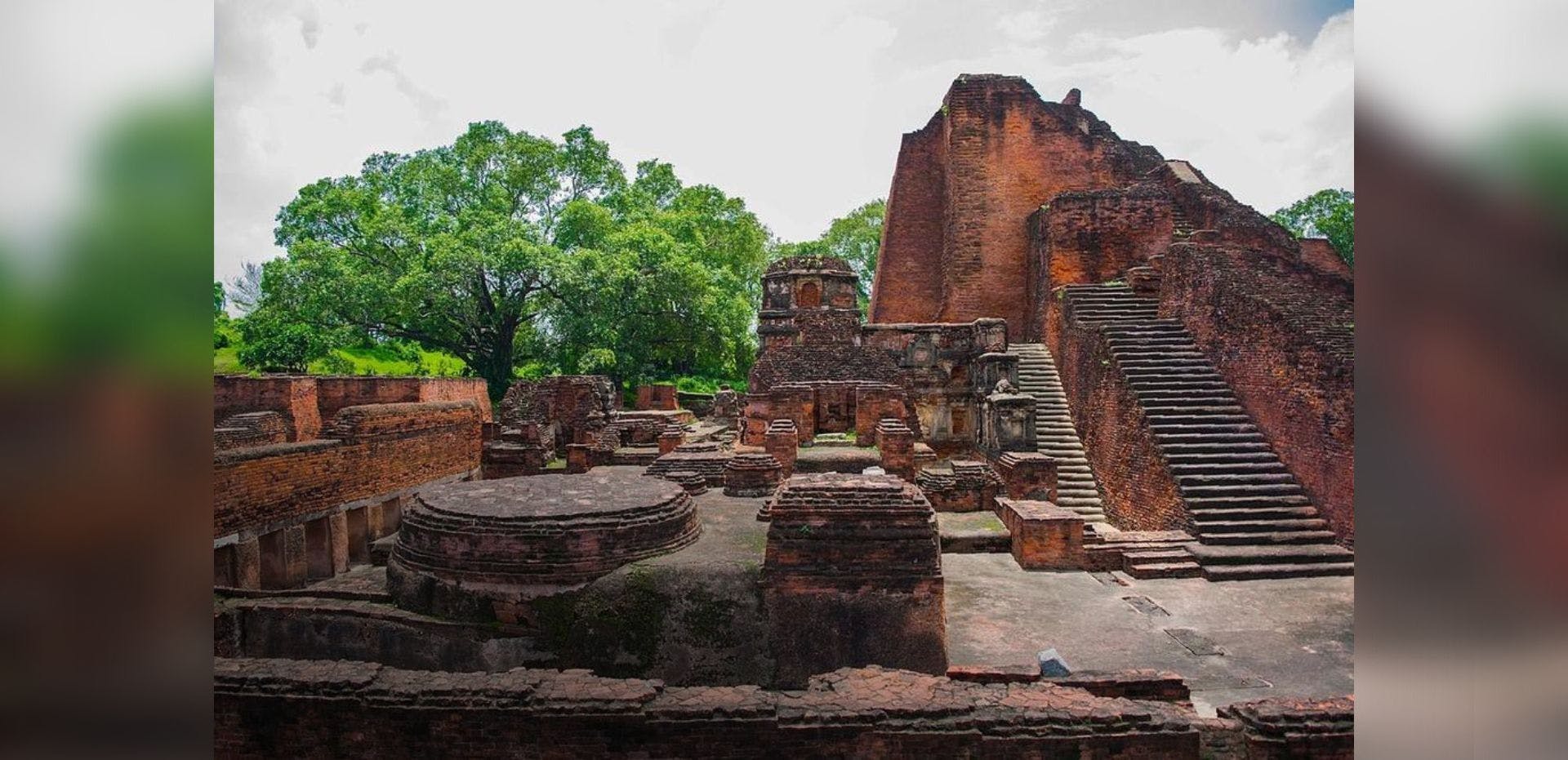
Nalanda: University to the World
- AUTHOR Aditi Shah
- PUBLISHED 24 May 2020
“Learned men from different cities who desire to quickly acquire renown in discussion, come here in multitudes to settle their doubts, and then the streams (of their wisdom) spread far and wide,” Chinese Buddhist monk Hiuen Tsang said, on his visit to Nalanda University in the 7th century CE. This centre of learning then attracted students from as far away as Korea, Japan, China, Indonesia, Persia and Turkey. And not everyone who sought it was granted admission.
Travel about 85 km southeast from Patna in Bihar and you’ll come across broken and ruined brick structures spread over 12 hectares. But rewind a thousand years, and exactly here stood the world’s most preeminent educational institute, a campus of multiple colleges, libraries, residential quarters and places of worship. Nalanda was situated just off a major trade route that passed through the neighbouring city of Rajgir, the first capital of the Magadha Empire. Rajgir was just 35 km south of Nalanda. Buddha and Mahavira both spent quite some time in Rajgir, delivering lectures. So it is quite possible that they both spent time in the Nalanda area.
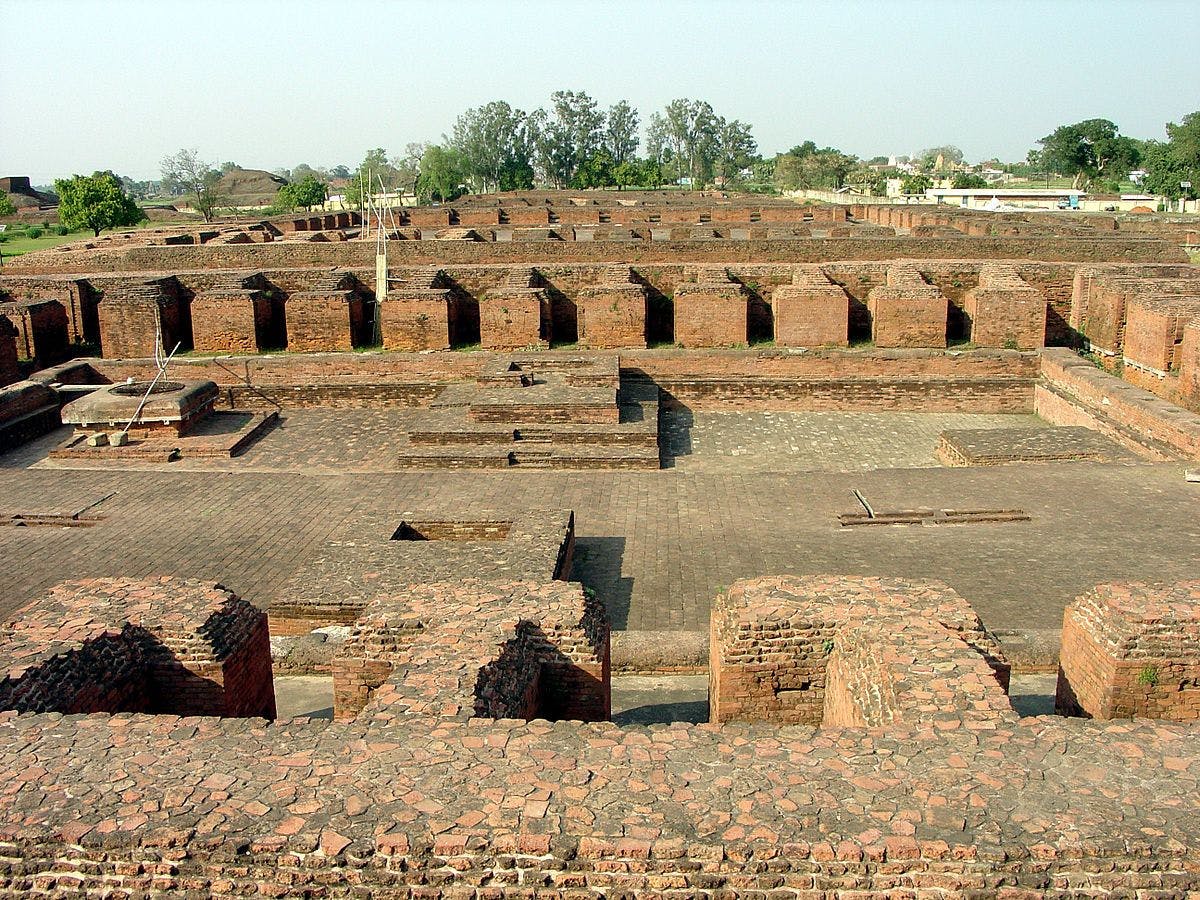
Hiuen Tsang notes in his travelogue that the ground on which Nalanda stood was originally a mango orchard. In the 6th century BCE, 500 merchants jointly bought this land for ten koti of gold coins and gifted it to the Buddha, who preached the laws of Buddhism here, for the next three months. This original endowment was followed by a continuous flow of other endowments through centuries, by successive sovereigns.
Taranatha, a Tibetan Buddhist scholar of the 17th century, says that in the 3rd century BCE, Emperor Ashoka (r. 269 – 232 BCE) built a stupa here to hold the remains of Sariputta, one of the Buddha’s chief disciples, who was also born in Nalanda. This ensured Nalanda’s significance as a place of pilgrimage.
However, it is more difficult to determine when Nalanda became a cloister and a college with several halls of learning. And there is debate over whether it can truly be called a university, or might more accurately be described as a monastic complex. Whatever the answer, it was one of the world’s first attempts at the organised transmission of knowledge, an attempt that sustained itself over an uninterrupted 700 years, leaving behind ruins that visitors continue to marvel at today.
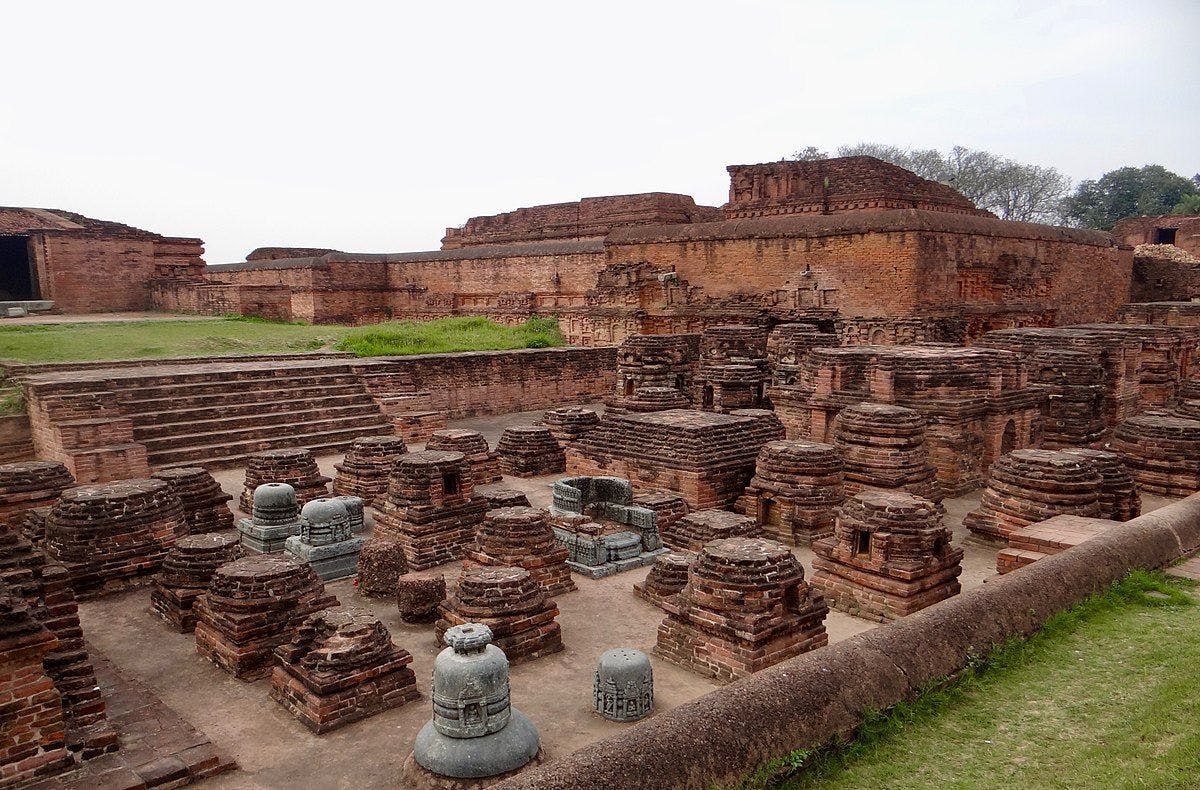
Evidence found at Nalanda suggests that the university has a history dating back only as far as the Gupta Empire of the 5th century CE. This is based on the fact that the oldest seal recovered during excavations here bears the inscription Kumaramatyadhikarana in Gupta script from the 5th century.
But historians like K A Nilakanta Sastri suggest the 3rd or 4th century CE marked the beginnings of the intellectual growth that would make Nalanda the great centre of learning that it later became. Amalananda Ghosh, former Director-General of the Archaeological Survey of India (ASI), provides some archaeological evidence for Nalanda’s dating. He says the main stupa at Nalanda shows signs of being remodelled no less than six times after its original foundation, and the fourth remodelling has beautiful stucco figures of the Buddha and Bodhisattvas on them. There are also inscriptions of Buddhist texts on bricks in the core of votive stupas , which point to some time in the 6th century CE. Considering the huge accumulations upon which the fifth version sits, Ghosh infers that the foundation of the original stupa must have been laid about two centuries earlier.
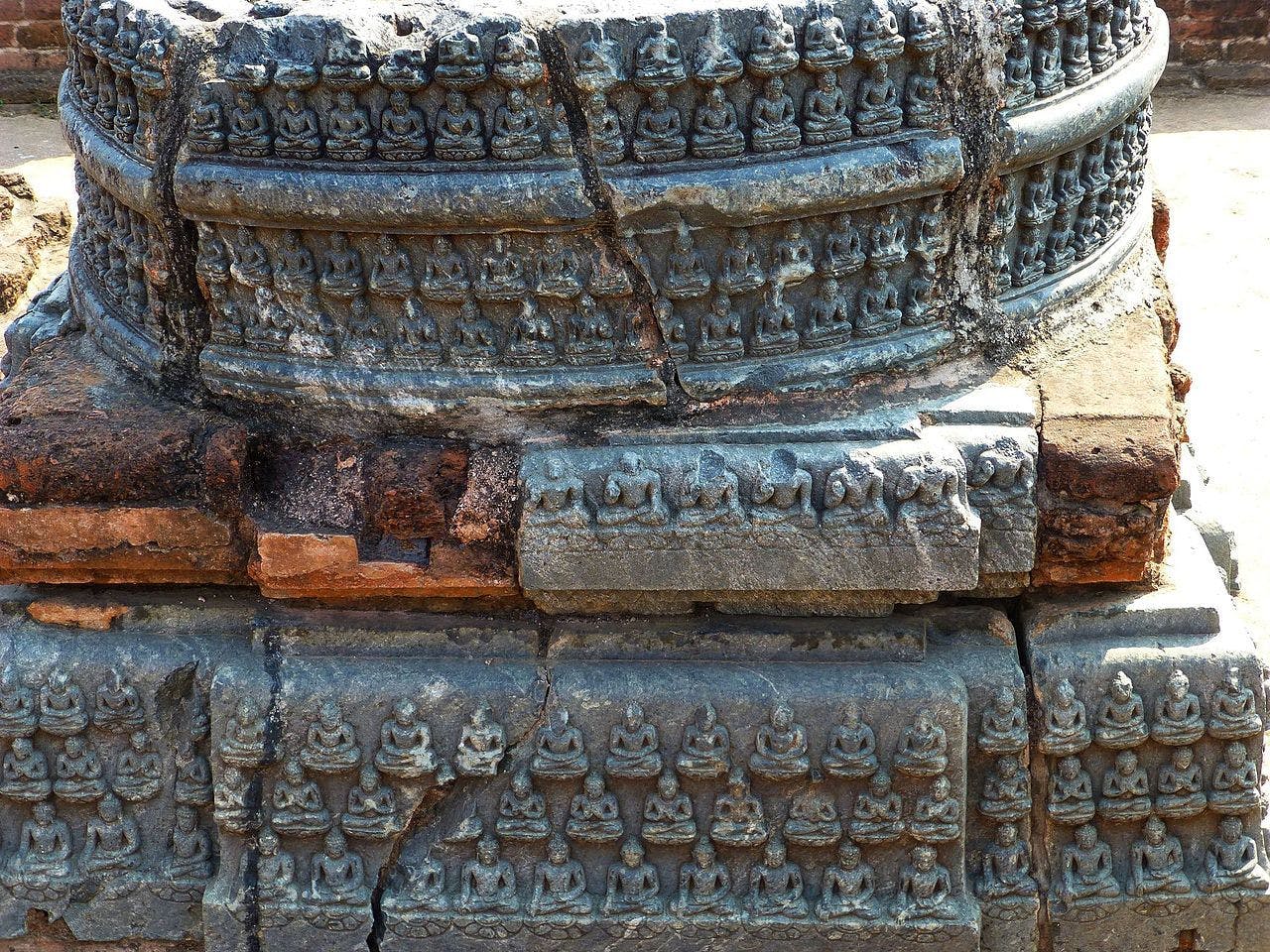
Hiuen Tsang attributes the foundation of the Nalanda institution to one Sakraditya. Historian Father H Heras identifies Sakraditya as Gupta Emperor Kumaragupta I (r.c. 415-455 CE). Kumaragupta I’s successors later extended and expanded the institution, building additional monasteries and temples. After the decline of the Guptas in the 6th century, the most notable patron of the mahavihara or mega-monastery was Harsha, the 7th-century CE Emperor of Kannauj.
Harsha remitted the revenues of about 100 villages as an endowment to the institute and 200 householders in these villages contributed the required amount of rice, butter and milk on a daily basis. About 1,000 monks from Nalanda were present at Harsha’s royal congregation at Kannauj. It was in his court that Hiuen Tsang was a guest before becoming a student at Nalanda.
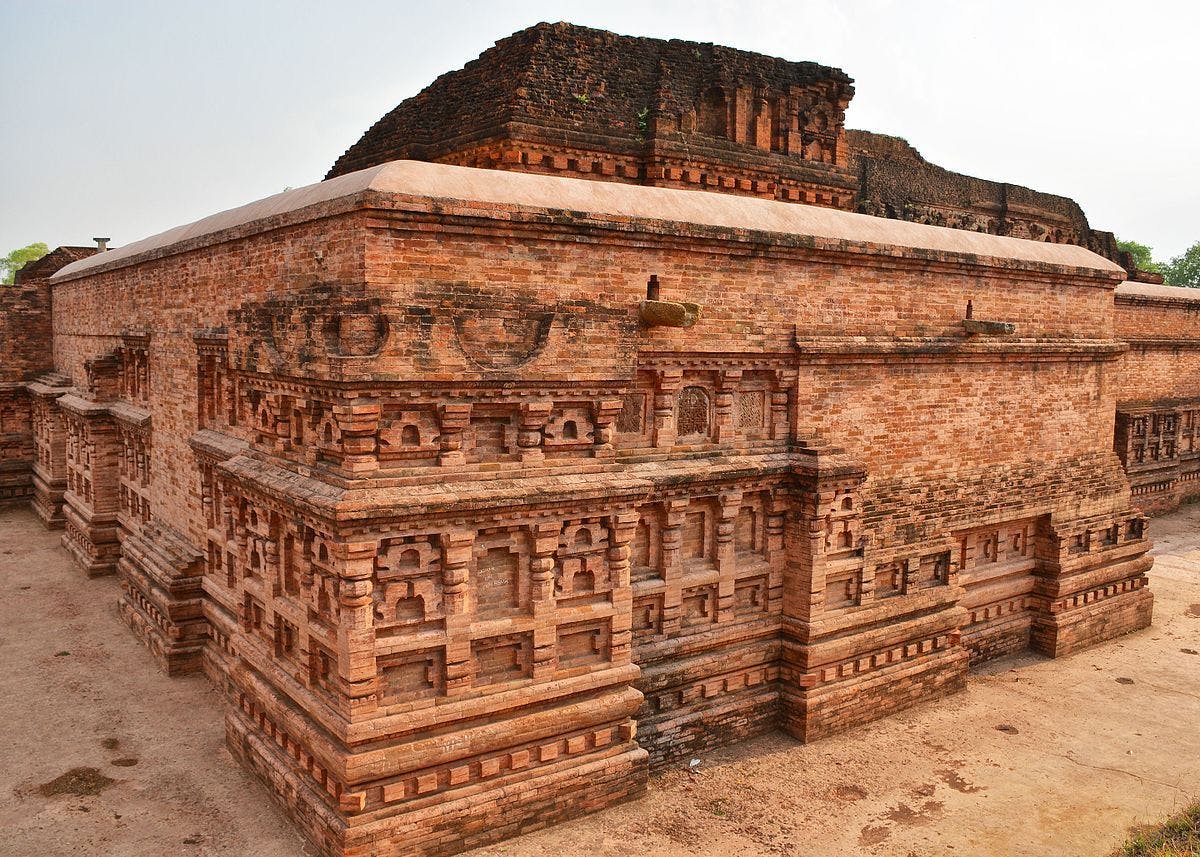
Hiuen Tsang studied here under the guidance of Shilabhadra (529-645 CE), the venerable head of the institution at the time. The Chinese scholar mentions that there were 1,510 teachers and 10,000 monks then. Frederick Asher, a specialist in South Asian art and author of Nalanda: Situating The Great Monastery (2015), believes these numbers were exaggerated. He writes that “it is important to remember that Hiuen Tsang wrote his travelogue after his return to Xian and that he had a target audience”. Such a large number of monks would require a huge amount of space and resources, and the excavated remains do not suggest that kind of scale.
Indologist A L Basham too believed the numbers in Hiuen Tsang’s writings weren’t consistent with modern finds at Nalanda. He felt the number of monks could have just about exceeded 1,000. Archaeologist H D Sankalia put that number at about 4,000.
Regardless of the numbers , the institute had begun to attract the kind of faculty that would go down in history. Among them were Dinnaga, the 6th-century founder of the medieval school of logic; Dharmakirti, the 7th-century primary theorist of Buddhist atomism; and Padmasambhava, the 8th-century founder of Tibetan Buddhism.
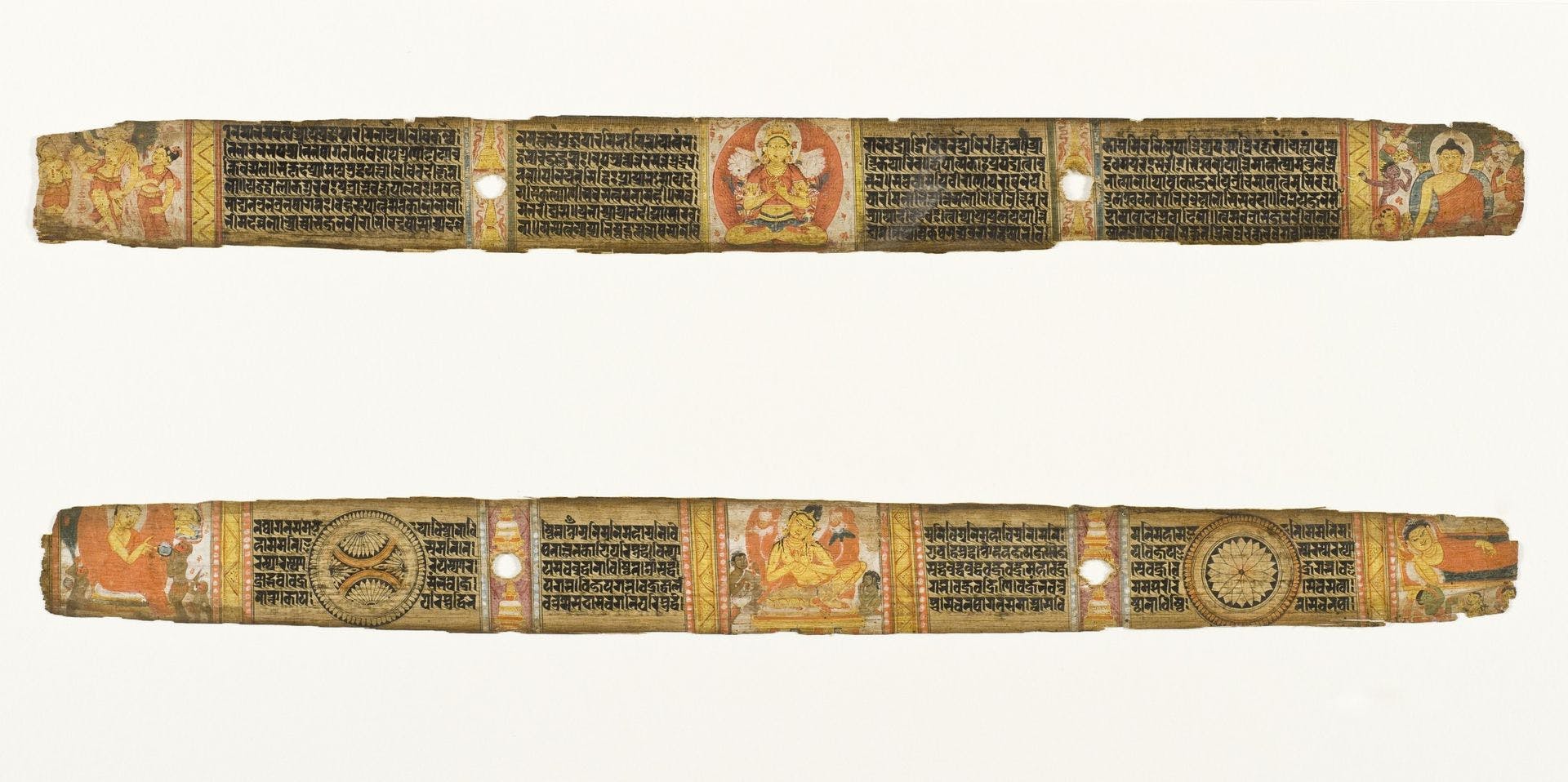
Traditional Tibetan sources, including the writings of Taranatha, mention the existence of a great library at Nalanda named Dharma Ganj (Piety Mart), which comprised three large multi-storey buildings – the Ratnasagara (Ocean of Jewels), the Ratnodadhi (Sea of Jewels) and the Ratnaranjaka (Jewel-Adorned). These buildings must have been home to hundreds of manuscripts and books on topics ranging from the Vedas and religion to grammar, logic, literature, astrology, astronomy, medicine, law, city-planning, theosophy and philosophy.
All students at Nalanda were expected to be well-versed in the tenets of the Mahayana and Hinayana sects of Buddhism. Their curricula also included regular debate and discussion. But again, there is no evidence of what was taught besides the accounts of travellers. Asher writes that on the seals found here, the entire complex was referred to as the Nalanda Mahavihara (mega-monastery), not Nalanda Vidyalaya (university). And so he believes that Nalanda was focused on religious texts and their interpretations rather than on subjects of a broader liberal education.
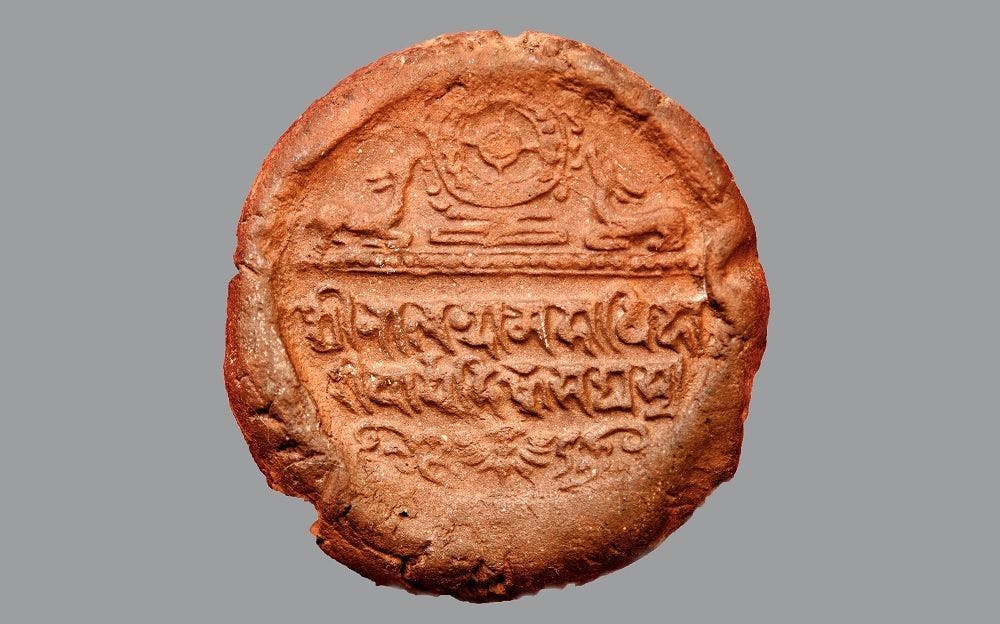
I-tsing was another Chinese Buddhist monk at Nalanda, who followed in the footsteps of Hiuen Tsang. He arrived in India in 673 CE and is believed to have spent 10 years at the university. Most of what we know about Nalanda today is from the travel accounts of Hiuen Tsang and I-tsing. The latter described that the minimum age for admission to Nalanda University was twenty years. He states that there were eight halls with as many as 300 apartments on campus. He wrote that daily life at Nalanda included a series of rites practiced by all. Each morning, a bell was rung, signalling the bathing hour, which led to hundreds or thousands of monks proceeding from their viharas (monasteries) towards a number of great pools in and around the campus. The next gong signalled that it was time for the ritual ablution of the statue of the Buddha. The chaityavandana conducted in the evenings included a ‘three-part service’ and the chanting of a prescribed set of hymns from scriptures. This ritual was completed by twilight.
Nalanda was administered by an assembly presided over by senior monks. It met in formal sessions to decide affairs and issues of management. The rules of the university were severe, and all priests were bound to observe them.
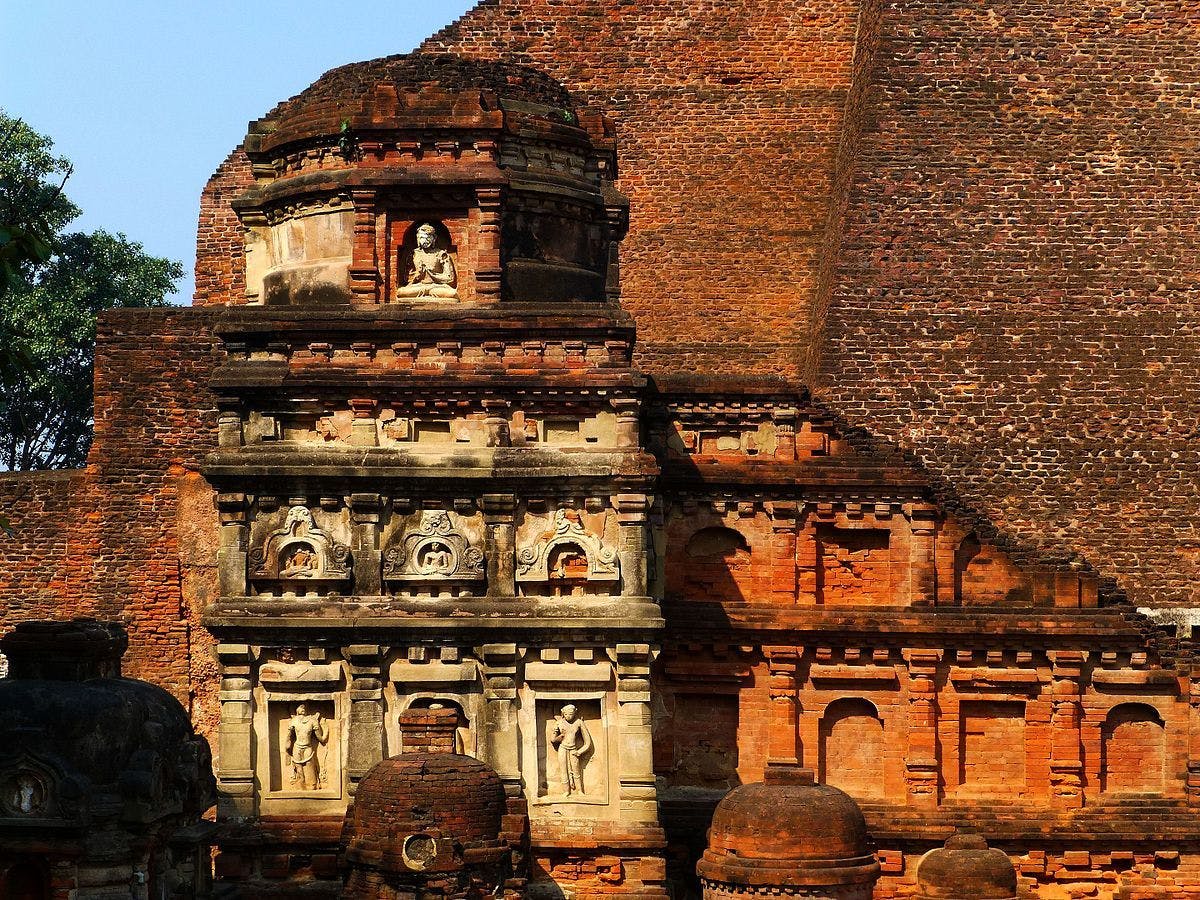
From the middle of the 8th century CE, Nalanda enjoyed the sustained patronage of the mighty Pala rulers of Bengal (8th to 12th century CE). They prized and cherished the educational institution, building new structures and renovating old ones. The 9th-century emperor Devapala appears to have been Nalanda’s most distinguished patron in this age. A number of metallic figures containing references to Devapala have been found among the ruins. The Palas were prolific builders, and their dynasty oversaw the establishment of four other universities modeled on Nalanda, at Jagaddala, Odantapura, Somapura and Vikramashila.
Other prominent rulers who were patrons of Nalanda included Shashanka of the Gauda kingdom (r. 590-625 CE ), Bhaskaravarman of Assam (625 CE), Bhoja I of the Gurjara-Pratihara dynasty (850 CE), and Govindachandra of the Gahadvala dynasty (1130 CE). There is also archaeological evidence of contact with the 8th-century Shailendra dynasty of Indonesia, one of whose kings built a monastery in the complex.
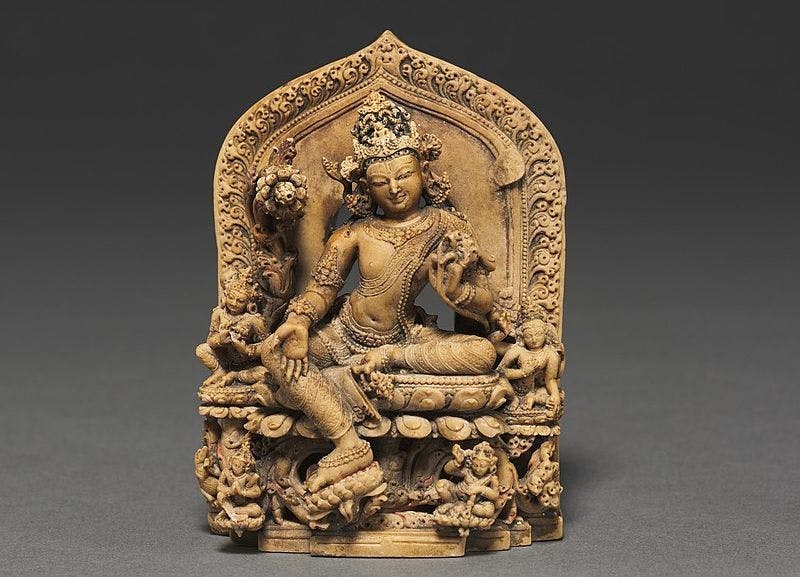
The different monasteries in Nalanda were maintained by different kingdoms, and served many interests besides the learning and sheltering of pilgrims. Merchants and ambassadors might have used them to further profitable trade relations and friendly political intercourse between kingdoms. The art and architecture at Nalanda also contributed to the development of Buddhist imagery, and a number of Mahayana and Vajrayana images are believed to have first emerged here.
It must have seemed like Nalanda would live as long a life as Buddhism, but the mahavihara would soon suffer multiple blows. The rise of Hindu philosophies and Bhakti Movement wave in the subcontinent and the waning of the Buddhist Pala dynasty in the 12th century were the first. The university also bore the brunt of political and philosophical rifts. A form of Buddhism became popular that was driven by ideas of tantrism, a belief in the efficacy of charms and spells, and secret practices and rituals.
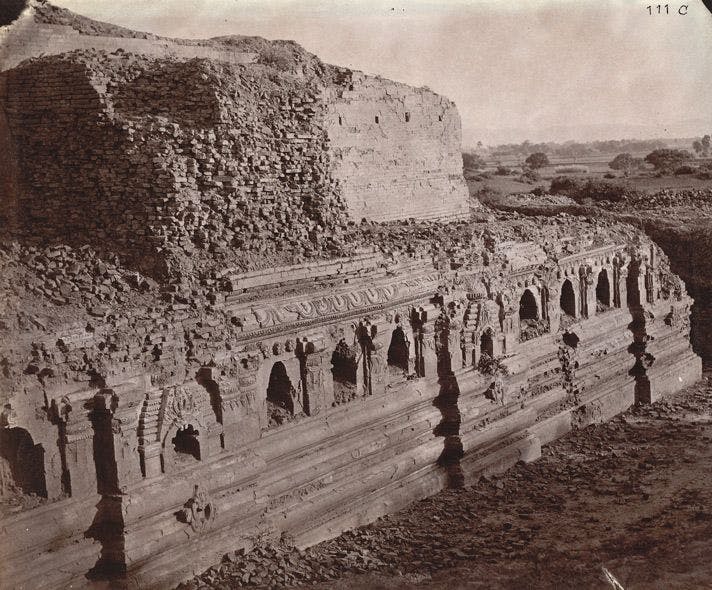
The final blow was delivered when Nalanda’s still-flourishing monasteries were overrun by the Afghan military chief Bakhtiyar Khilji, during his invasion of Northern India at the turn of the 13th century. He ransacked and destroyed Nalanda and then went on to torch the universities at Odantarpuri and Vikramshila too. The contemporary Persian historian Minhaj-i-Siraj, in his chronicle Tabaqat-i-Nasiri , written a few decades later, reported that “thousands of monks were burned alive and thousands beheaded as Khilji tried his best to uproot Buddhism. The burning of the library continued for several months and smoke from the burning manuscripts hung… like a dark pall over the low hills”.
Still, Nalanda, or at least parts of it, managed a resurrection. A Tibetan monk Dharmasvamin visited Nalanda in 1235 CE. He mentions that most of the buildings had been damaged and fallen into disrepair. Even then he found a 90-year-old teacher named Rahula Shribhadra was instructing a class of about 70 students. He studied under him for 6 months. But all this was just a ghost Nalanda’s glorious past.
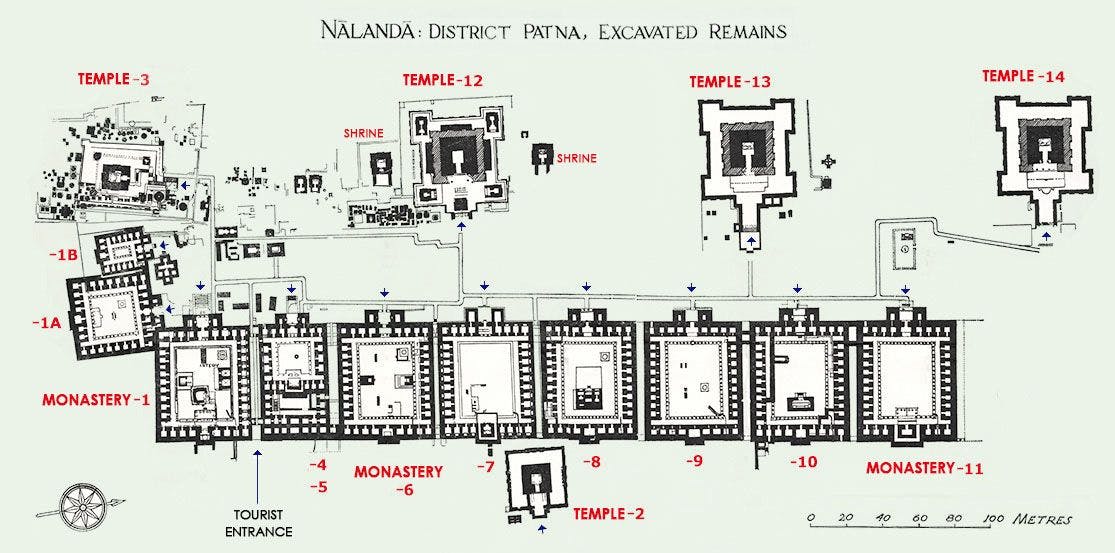
For centuries after, Nalanda remained largely forgotten. Until Francis Buchanan-Hamilton, a Scottish physician working for the Bengal Medical Service, surveyed the site in 1811-12 and found some Brahmanical and Buddhist imagery and reported it to the ASI. It took almost half a century more until, in the 1860s, the then ASI Director-General, Alexander Cunningham, identified the region as the one mentioned in the travelogue of Hiuen Tsang. To confirm this, the first preliminary excavations began.
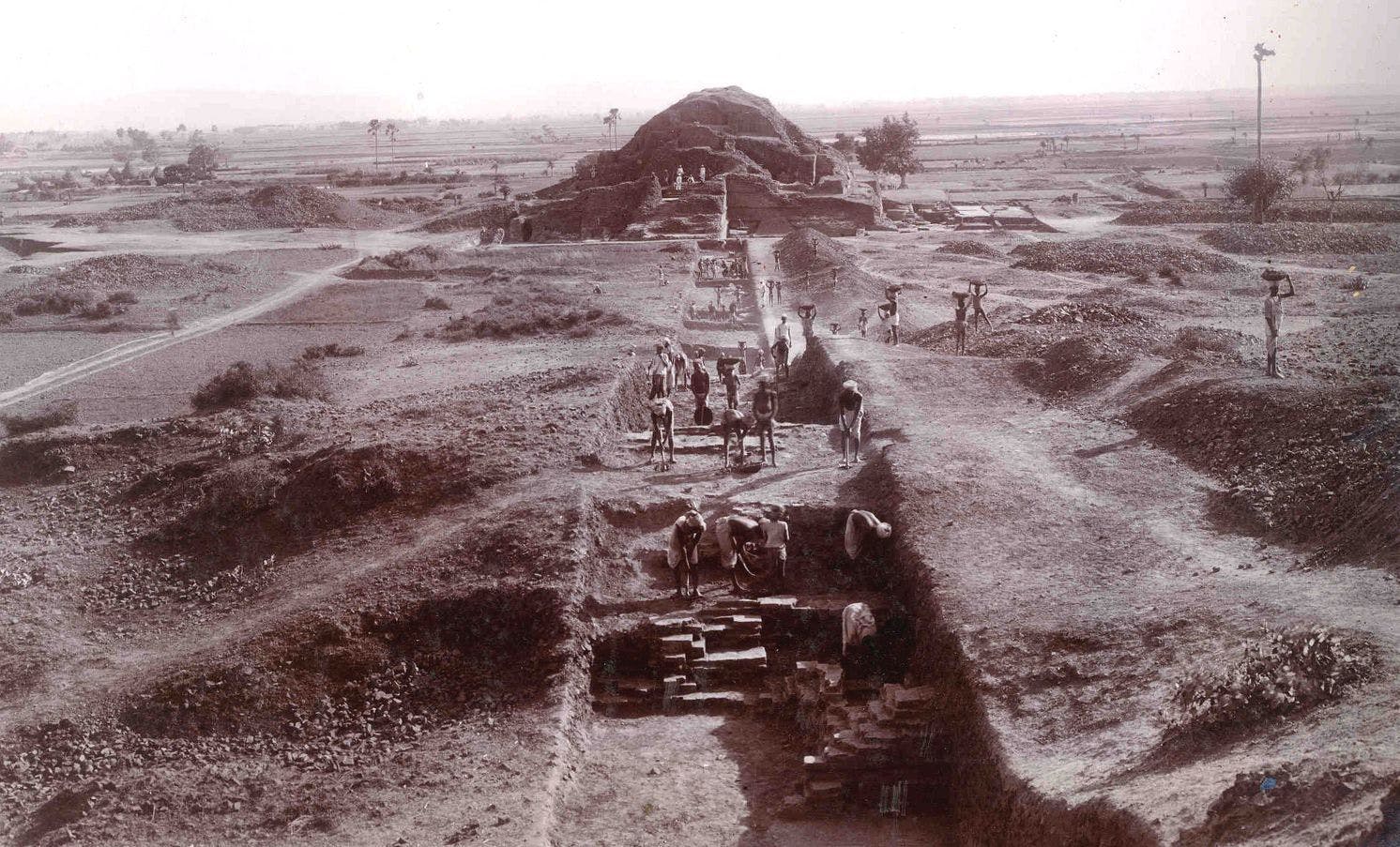
It would be another 50-odd years until, in 1915, systematic excavations commenced, and eleven monasteries and six brick temples, arranged in an orderly layout, were unearthed. A 30-metre-wide passage was found, that ran from north to south of the ruins. The chaityas (prayer halls) are arranged to the west of this passage. To its east, lined up, were the remains of the viharas .
Frederick Asher said it was possible that Nalanda stretched far beyond the currently excavated limits of the complex. Landsat images have revealed water bodies, tanks or pokharas that surround the campus, providing an alternative perimeter that also indicates a rich farming belt may have been part of the mahavihara, providing sustenance to those in the monasteries. Asher suggested that the surrounding villages – Bargaon, Surajpur and Begumpur – may have been a part of the complex as well, given the large number of antiquities still to be found there.
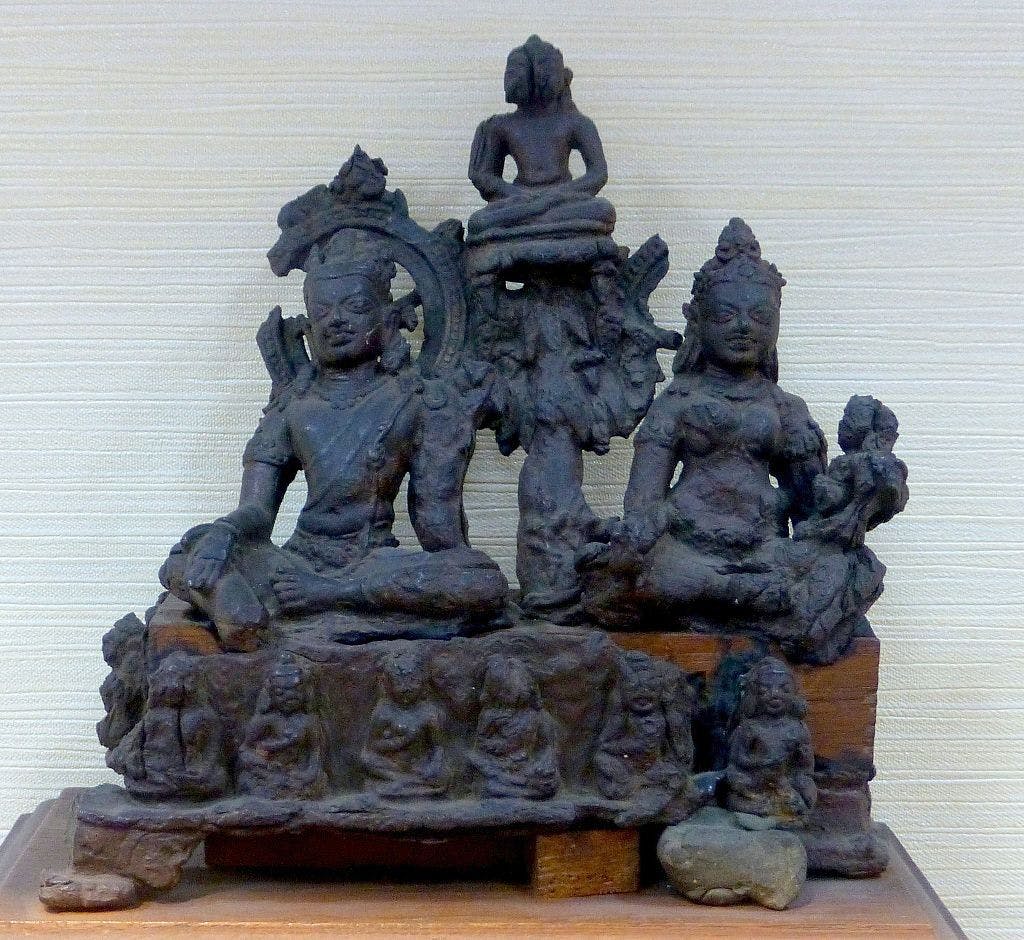
Hundreds of sculptures in stone, bronze and stucco were retrieved from Nalanda and surrounding areas. These include images of the Buddha in different postures, as well as those of other Buddhist deities such as Marichi, Maitreya, Jambhala, Vajrapani and Avalokitesvara. Sculptures of Hindu deities such as Shiva-Parvati and Mahishasura-Mardini were also found. Besides these, copper plates, terracota artifacts, pottery, coins, seals and inscriptions were excavated, many of which are on display at the Nalanda Archaeological Museum, situated near the ruins.
In 2016, the Archaeological Site of Nalanda Mahavihara was declared a World Heritage Site. Two years before that, in 2014, the Government of India opened the gates to a revived Nalanda University in Rajgir. It has been designated an Institution of National Importance by Parliament. In keeping with its legacy of excellence and its multicultural past, the first chancellor of the university was Nobel Laureate Amartya Sen; the second was former Singapore Minister for Foreign Affairs George Yeo.
Live History India is a first of its kind digital platform aimed at helping you Rediscover the many facets and layers of India’s great history and cultural legacy. Our aim is to bring alive the many stories that make India and get our readers access to the best research and work being done on the subject. If you have any comments or suggestions or you want to reach out to us and be part of our journey across time and geography, do write to us at [email protected]
Join us on our journey through india & its history, on lhi's youtube channel. please subscribe here.

Handcrafted Home Decor For You

Blue Sparkle Handmade Mud Art Wall Hanging

Handcrafted Tissue Box Cover Sea Green & Indigo Blue (Set of 2)

Scarlet Finely Embroidered Silk Cushion Cover

Sunflower Handmade Mud Art Wall Hanging
Best of Peepul Tree Stories
India Votes 2024

Bow and arrow or torch? In Maharashtra, confusion over new election symbols may help BJP, allies

BJP worker’s son claims in video he cast eight votes in Uttar Pradesh’s Farrukhabad

International Booker Prize 2024: Quick reviews of the six shortlisted novels

Why a health crisis is brewing among the labourers of Assam’s tea gardens

Varanasi poll: As 33 nominations are rejected, eight applicants allege that the process was rigged

Listening to 41 Modi interviews: Few tough questions, no rebuttals, no fact checks

First person: Why I came home from the UK to vote this year

Is Anirban Bhattacharya Bengali cinema’s white knight?

What a regal South Indian ornament in a famous Rossetti painting tells us about the British Raj

In heated Maharashtra poll battle, Uddhav Thackeray emerges as Opposition alliance’s strike weapon
What the ruins of the original Nalanda university tell us about an old civilisation of India
An excerpt from ‘indians: a brief history of a civilisation’, by namit arora..

Our knowledge of Nalanda comes from three kinds of primary sources: archaeology, epigraphy (the study of inscriptions) and texts that survived in foreign lands after Buddhism and its texts disappeared from India by the mid-second millennium. Our chief sources for Nalanda are the writings of Xuanzang and Yijing, who spent two to three and ten years there, respectively. They’ve left us a portrait of its life in the seventh century, including its physical spaces, practices and rhythms of daily life, finances, curriculum and other features of its monastic community.
Legends have long traced Nalanda’s origins to the Buddha himself. One that Xuanzang recorded in the seventh century CE speaks of a naga (serpent) named “Nalanda” who once lived in a pond in a mango grove, later the site of the Mahavihara. “Five hundred merchants,” he adds, “bought [the mango grove] for ten kotis of gold pieces and gave it to the Buddha,” who preached the law here for three months. From then on, it became a site of teaching and learning, and even Nagarjuna, the leading figure of Mahayana Buddhism and a “second Buddha” to some, was said to have taught here in the second century CE (though evidence for this is scant).
When Faxian passed through the adjoining “village of Nala” in c 407 CE, he noted a stupa with relics of Sariputra, one of the two closest disciples of the Buddha. Sariputra, the locals told Faxian, was a native of Nala and so was cremated at the site of the stupa. Oddly, no community of monks had grown around the relics of a figure as eminent as Sariputra. Faxian did not mention any such community. It’s therefore reasonable to conclude that there was no monastery at Nalanda when Faxian visited in the early fifth century CE.

Nalanda Mahavihara likely arose a few years after Faxian’s visit – during the reign of Kumaragupta (reigned c 414-55 CE) – and lasted around eight centuries. The site’s legendary links with great names may well have shaped the decision to locate the monastery there.
After its demise in the thirteenth century, Nalanda lay forgotten and buried under mounds of earth for centuries. It was Stanislas Julien’s French translation of Xuanzang’s travels in 1853 that kindled interest among colonial archaeologists in identifying the site, which they soon did. In 1862, Alexander Cunningham and the freshly minted Archaeological Survey of India, which he founded, surveyed the site. The ASI led formal excavations and restorations at Nalanda from 1915-37 and then again from 1974-82.

Their work uncovered eleven monasteries, six temples and a giant stupa, aka the Great Monument. The monasteries, laid out in a row, face a parallel row of temples directly across. A 30-metre-wide path runs between the two rows. Each monastery, averaging about 40m x 60m, is made of oblong red bricks, once plastered with a paste of lime and sand. In Yijing’s time, there were seven monasteries, all “very similar in general appearance and layout; if you see one, you have seen all the seven”.
Entering one of the monasteries, I imagine being a monk in the seventh century and seeing what he would’ve seen: A Buddha shrine greets me by the main entrance. Walking through a thick-walled corridor, I reach an inner courtyard. It is enclosed on all four sides by two storeys of rooms, perhaps thirty-two on each floor. A veranda lines the courtyard on all four sides; stone pillars hold up a wooden roof over it. The open courtyard has a podium for lectures, a brick oven/stove, a well (with an octagonal cross-section, supposedly inspired by the eightfold path) and bathrooms with covered drains leading out.

Parts of the courtyard floors that aren’t brick or stone are daubed with a mixture of dried cow dung and straw, which provides termite repulsion, thermal insulation and a cleaner, firmer surface than mud. All rooms in the monastery have walls that are multiple feet thick. Teachers and students live together in the monastery; each year before the monsoon, the eldest monks are given the best rooms. Monks training to become temple priests get a room with a purpose-built niche for a holy image, to which they offer flowers and incense after bathing each morning.
Rooms host either one or two monks and have wooden doors. The monks sit on simple chairs, wood blocks or small mats. Each morning, the monks roll up their mattresses – two sewn sheets of cloth with a layer of wool in between. Pillows are stuffed with “home products, such as wool, hemp-scraps, the pollen of Typha latifolia, the catkins of the willow, cotton, reed, Tecoma grandiflora, soft leaves, dry moths, the ear-shells, hemp or beans”.
The monks store books and utensils in niches cut into the thick walls. All this reminds me of my own spartan hostel room at IIT Kharagpur, which too had just enough room for a narrow cot, a desk and a chair, and a cupboard with stone slabs for shelves.
I walk up to the Great Monument, which is still decorated with a few fine sculptural panels of stucco or stone. It has multiple stairs going to the top. In Yijing’s time, it had a “hall with mosaic floor”, a seat “made of gold and studded with jewels” and “an image of the Buddha Tathagata” turning the Wheel of Law. I try to imagine “the ornamentation of the [Great Monument that] was delicate and superb”, according to Yijing.
At its base may have been the famous library of Nalanda, though a Tibetan source speaks of a library with nine storeys, which seems implausible for the building technology of the day. In any case, the library’s location remains uncertain. It held the sorts of manuscripts that the Chinese pilgrims came in search of (at least eight finely illustrated palm-leaf manuscripts created at Nalanda during the Pala period still survive).
Nalanda was a place for advanced learning, not basic education. Some of its teachers both taught and composed path-breaking treatises and commentaries. A Nalanda education held serious cachet in the scholastic community, and it took in the best and the brightest. Or as Xuanzang puts it, they were “men of the highest ability and talent...there are many hundreds whose fame has rapidly spread through distant regions”.
Aspiring students had to be at least twenty years old and pass an oral exam at the monastery’s entrance. They had to “show their ability by hard discussion” and demonstrate a deep knowledge of “both old and new books before getting admission”. No more than two or three out of ten were admitted, and even they were promptly humbled by the calibre of their teachers and co-students. Nuns were admitted too but little record of their lives survives.

Nalanda: The ancient hub of knowledge
Nalanda, like Rome, was not built in a day. It took several centuries to evolve, diversify and extend its civilizing influence not only to all corners of the country but to lands as distant as China, Japan, Malaysia, Java, Sumatra, Korea, Nepal and Tibet.
Originally a mango-grove called Pavarika in the village Bargoan in Bihar, the place was sanctified by the Sakyamuni (Gautam Buddha) himself when the Enlightened One broke journey here to halt and rest, not once but several times. Ashoka built a Vihara (monastery) here and Harsha made it possible for a thousand scholars to delve deep into a hundred disciplines everyday in its numerous halls and more numerous temples.
Contemporary eye-witness accounts testify that there were so many Viharas around Nalanda, Rajgriha and Vikramsila that the whole area was called Bihara, from which the present day Indian state of Bihar derives its name. The transformation of Nalanda Vihara into the Nalanda university was the result of a rich heritage which helped it become an international center of education and culture. Nalanda stood for freedom in learning, thought, expression and action.
This heritage was both non-Buddhist and Buddhist. While the former included the Vedas and the Puranas, the latter consisted of works such as Vinay Pitaka, Dhammapada, Abhidhamma and Majhima Nikaya, with excellent commentaries by scholars such as Nagarjuna, Maiteriya, Asanga, Vasubandhu and Dinnaga, who defined and refined Buddhism in its various facets and dispensations. Nalanda, therefore, honoured thought and men of thought in the best of Indian traditions.
Nalanda was a residential university like so many others in those times, such as Taxila, Ujjaini, Vallabhi, Vikramsila and Amravati.
Yet, it was a university with a difference. The Gate Keepers of Nalanda were scholars of the highest repute, well versed in their subjects and drawn from the best in the country to examine the fresh entrants at the Gate itself. This was a novel method of ‘Entrance Examination’ and deserves admiration when we consider the historical context of Nalanda’s period.
The Gate Examination was very tough. Seven or eight scholars out of every ten were unsuccessful. So the scholars came to the gates of Nalanda again and again, till they were selected. It must have been an extraordinary spectacle to see these scholars, from all parts of the world assemble at Nalanda seeking admission. Merit alone was the criteria and even the Vice Chancellor had no discretion.
There are records of instances where scholars either belonging to or patronized by royal families were rejected, in spite of the fact that the expenses of Nalanda were met with from royal grants of village revenues. There is evidence that the revenues of several villages were granted to Nalanda, for the maintenance of its hostels and the administration of its temples and Viharas.
Several Chinese scholars and monks visited, studied and taught at Nalanda. Their memoirs are a rich and authentic source for the reconstruction of academic life at Nalanda. According to one such scholar-monk, I-Tsing, the minimum age for admission to Nalanda was 20 years. This indicates that scholars who had already passed out from some other university were admitted to Nalanda to pursue higher knowledge.
We also have the evidence from Hiuen Tsang, the Chinese pilgrim who came to Nalanda in the days of the “Good King” Harsha. He confirms that “learned men from different cities, who desire to acquire renown in discussion, come (to Nalanda) in multitudes to settle their doubts.”
The Gate-Keepers of Nalanda were in fact, the Gate-Keepers of India’s knowledge, her culture and heritage. Anyone was welcome for an open discussion on any aspect of religion, philosophy, law and life.
To be admitted to this great center of learning was a matter of great pride and prestige. Its multi-disciplinary approach to learning attracted students from far off lands. Although the subject of theology was compulsory, Nalanda was not a sectarian or a religious university imparting only Buddhist thought; other subjects were taught as fervently.
Almost all sciences, including the science of medicine were taught. So were the Upanishads and the Vedas. Panini’s grammar, the science of pronunciation (Phonetics), etymology, Indology and Yoga were all included in the curricula. Surprisingly, even archery was taught. Hiuen Tsang himself learnt Yogasastra from Jayasena. When King Harsha requested Shilabhadra to send four learned scholars to Orissa to debate with the heretics, Hiuen Tsang was chosen to be one of them.
Hiuen Tsang, who stayed at the university for 17 years, first as a student and later as a professor under the Master, Shilabhadra, came to India via the Gobi desert and entered Kashmir through the Himalayas.
At Nalanda, he was received at the Gate with a thousand lamps, his erudition and reputation having travelled faster than him. Here he studied to obtain the degree of Master of Law and became the Vice-Principal of this great University. The head of the University was called ‘Pandita’ and Shilabhadra occupied this position when Hieun Tsang came to join as a student. In no time, the new entrant rose in the estimates of Shilabhadra who sent him out on difficult assignments involving long and perilous journeys.
According to Hieun Tsang’s description, the daily schedule at Nalanda was packed with rituals. The day began with a call for the morning bath. It seems that a morning bath was compulsory for every inmate; at least it was obligatory to bathe at the prescribed hour. The bath was followed by the ablution of the holy image of Buddha, by furnishing heaps of flowers and incense, a fairly prolonged ritual accompanied by recitation of stotras and singing of hymns. Afterwards, the inmates had their meagre breakfast.
Thereafter, they went to their respective halls for discussion. In the afternoon, another ritual called ‘Caitya Vandana’ was held, wherein priests assembled at the main mate of the monastery and sang songs in praise of Sakyamuni. They could go out in the evenings and the night was meant for repose.
Knowledge of Sanskrit was essential and it meant having a complete mastery over Sanskrit grammar, literature and correct pronunciation. The method of teaching was tutorial followed by discussions.
Listening to the discussions was education. It is extraordinary that the discussions continued throughout the day and, indeed, the night. Nalanda scholars never tired of discussions; rather, they welcomed them. Hieun Tsang was deeply impressed with the discipline at Nalanda. In its existence of about 700 years at the time of his visit, there had not been a single case of any strike or disturbance or even commotion (except intellectual ferment) at the University. Besides, there were discourses open to all where all subjects from life to death were discussed.
According to I-Tsing: “They arrange every day about hundred pulpits for preaching, and the students attend these discourses without fail, even for a minute.” There was no writing work for Nalanda scholars except the copying of manuscripts and texts. It may be recalled that both Hiuen Tsang and I-Tsing carried huge loads of such texts back to China upon their return.
Nalanda was an example of the Guru-Shishya parampara, a great Indian tradition. The authority of the Guru (teacher) over the shishya (student) was absolute, and yet, dissent was permitted in academic matters. The tradition, although going back thousands of years, flourished at Nalanda more than elsewhere.
Describing the Guru-Shishya relationship, I-Tsing says: “He (Shishya) goes to the teacher at the first watch and at the last watch in the night. First the teacher bids him to sit down comfortably. Selecting some passages from Tripatakas, he gives a lesson in a way that suits the circumstances and does not leave any fact or theory unexplained. He inspects his pupil’s moral conduct, and warns him of defects and transgressions. Whenever he finds his pupil at fault, he makes him seek remedies and repent. The pupil rubs the teacher’s body, folds his clothes and sometimes sweeps the apartment and the yard. Then having examined the water to ensure there are no insects in it, he gives it to his teacher. Thus, if there is anything to be done, he does all on behalf of the teacher.”
No fees of any kind were charged at Nalanda for the studies. No price was paid for food or clothes or accommodation. There was no punishment of any kind.
For the faults or the defects of the students, the teachers punished themselves. The teacher-pupil relation was like that of the father and his son. The greatest delight and the highest reward of the teacher came when his pupil outshone him.
Sakyamuni had even laid down detailed duties and responsibilities of the teachers and the pupils, from early morning till might when the teacher went to sleep. In the words of Gautama the Buddha, “the pupil is also to act as a check, as it were, upon the preceptor, in keeping him steadfast in the faith.”
The fall of Nalanda at the hands of the Turks is a story too deep for tears. The City of Knowledge, which took several centuries to build, took only a few hours to be destroyed. Legend has it that when some monks fell at the feet of the invaders to spare at least its world-famed library, Ratnabodhi, they were thrown in the fire along with the books. The rest fled, and Nalanda was relegated to a memory.
Thus ended the story of Nalanda till it was re-told first by Hamilton and later by Alexander Cunningham. The excavations started in 1915 and continued for twenty years.
Yet much remains to be done. At the Nav Nalanda Mahavihara, which stands close to this ancient site, Sakyamuni seems to beckon all men of knowledge to restore the glory of this greatest center of learning of the yore.
~ Pranav Khullar, Freelance Writer
You may also like
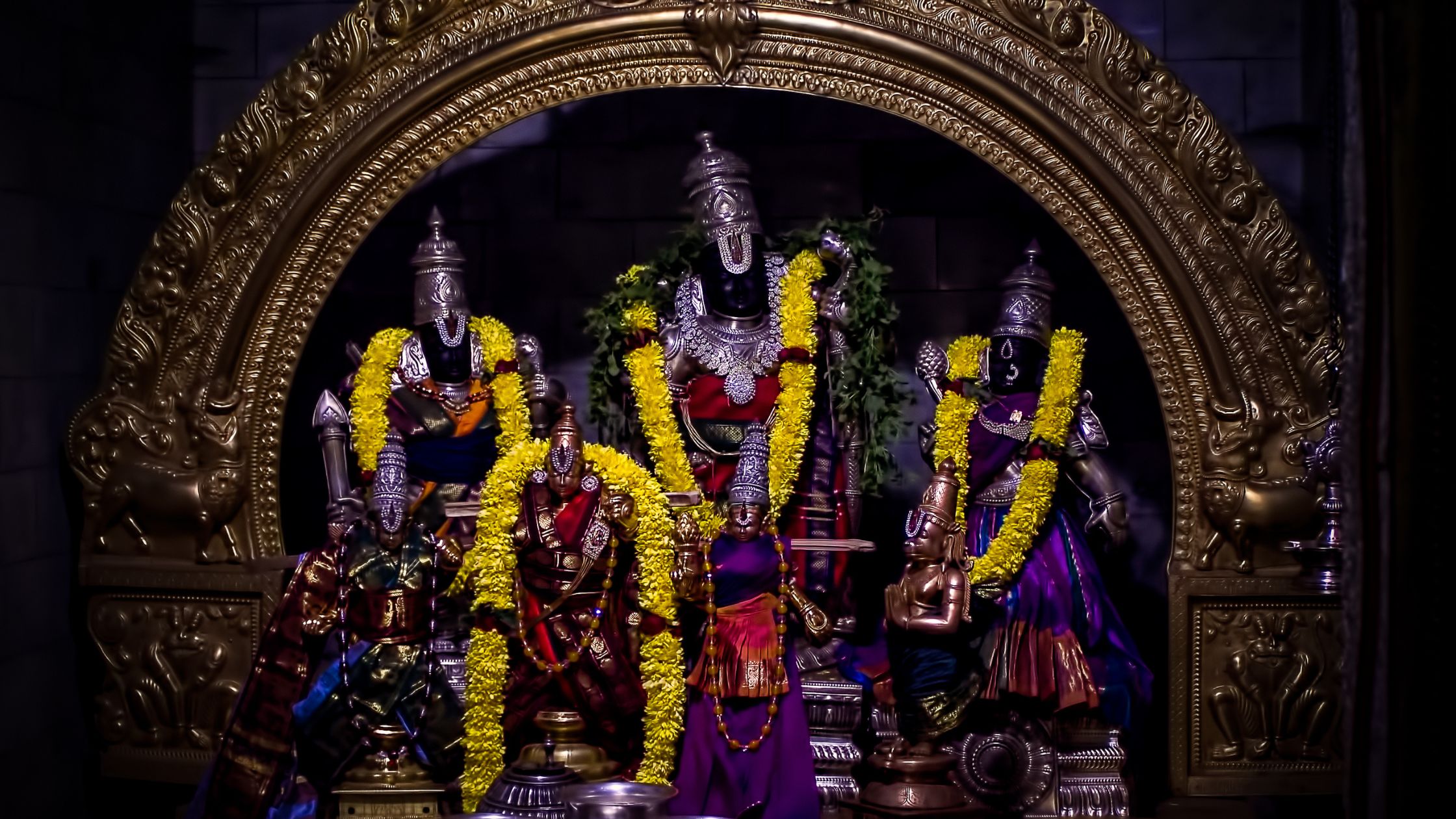
Rama and Sita: The Enduring Legacy of Their Love Story in Indian History and Culture

Set Hindu Temples free from Government Interference

How Ayurveda Pioneered Smallpox Inoculation
Sanskriti calendar 2024.

Search the website
Like us on facebook.
Get daily updates via Email
Enter your email address:, recent posts.

Navratri Series – Day 9: Goddess Siddhidatri – The Bestower of Supernatural Powers
Celebrate the conclusion of Navratri with Goddess Siddhidatri on Day 9. Learn about her powers to bestow siddhis and her role in achieving spiritual enlightenment. #Navratri2024 #GoddessSiddhidatri #SpiritualJourney

Navratri Series – Day 8: Goddess Mahagauri – The Beacon of Purity and Serenity
Day 8 of Navratri is dedicated to Goddess Mahagauri, known for her purity and tranquility. Discover how she symbolizes cleanliness and moral integrity, offering peace and renewal to all.

Navratri Series – Day 7: Goddess Kalaratri – The Fierce Protector
Explore the might and mystique of Goddess Kalaratri on Day 7 of Navratri. Learn about her role as the destroyer of darkness and her powerful protection against evil.

Navratri Series – Day 6: Goddess Katyayani – The Warrior of Righteousness
“Discover the powerful essence of Goddess Katyayani on Day 6 of Navratri. Learn how she embodies courage and fights for righteousness, symbolizing victory over evil.

Navratri Series – Day 5: Goddess Skandamata – The Mother of Wisdom and Courage
Day 5 of Navratri is dedicated to Goddess Skandamata, embodying maternal love and warrior strength. Discover how she imparts wisdom and courage in our lives.

Sanskriti comes from the Sanskrit root “kr” which means to do or to make prefix “sam” is applied before it to convey a sense of embellishment. It means actions done for the holistic refinement and perfection all the potentialities within a human being.
Important Links
“The term “Rishi” in Sanskrit originates from a root that means “To See.” Rishis, quite literally, “see” truths that are unveiled to them in elevated states of consciousness. .These are recorded in Sacred texts called Upanishads , Vedas etc. The wisdom imparted by ancient Rishis has not only enriched the realm of inner science but has also played a pivotal role in shaping and advancing modern scientific understanding. Let us Explore……
Sanskriti Social
Copyright © 2024. Sanskriti Magazine
Copyright © 2024. All rights reserved.

myIndiamyGlory
Ancient. medieval. post-medieval. present..
Nalanda: 9 Million Books Burnt in 1193 by Bakhtiyar Khilji
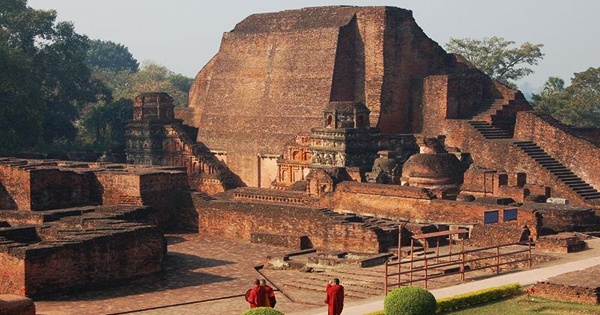
Nalanda University! The very utterance of this name will transport you to India’s ancient terrain of knowledge. This ancient center of higher learning, located in Bihar (in the ancient kingdom of Magadha), is India’s second oldest university after Takshila. Spread over an area of 14 hectares, it was a principal seat of learning from the last century of BCE till (the Turkish invasion of) 1193, attracting students from as far as Tibet, China, Greece, and Persia. While datable history of Nalanda University as per literary records and inscriptions started from the Gupta period, dating back to at least 2100 years, archaeological excavations and further discoveries prove it existed since the period beyond 1200 BCE.
All of the ancient Indian universities including Nalanda followed highly formalized methods of Vedic learning. It was the Guptas who patronized university education, leading to the establishment of Nalanda University. A seal identifying a monarch named Shakraditya believed to be Kumaragupta I, a Gupta emperor, is considered the founder of Nalanda.
While students from across the world enrolled for higher studies, there have been evidences of kings from foreign lands donating for the building of structures within the Nalanda University complex. There is archaeological evidence of a Shailendra king of Indonesia who built a structure within the campus. Nalanda University was a residential seat of learning and the campus contained 10 temples, classrooms, meditation halls, monasteries, dormitories, etc. including lakes and parks spread across eight compounds. The university accommodated over 10,000 students and 2,000 teachers.
To quote AICTE on Nalanda University from its article on ‘Ancient Universities in India’,
“The center had eight separate compounds, 10 temples, meditation halls, classrooms, lakes and parks. It had a nine-story library where monks meticulously copied books and documents so that individual scholars could have their own collections. It had dormitories for students, perhaps a first for an educational institution, housing 10,000 students in the university’s heyday and providing accommodations for 2,000 professors. Nalanda University attracted pupils and scholars from Korea, Japan, China, Tibet, Indonesia, Persia and Turkey.”
According to accounts by pilgrim monks from East Asia and other historians, the curriculum in Nalanda University included study of Mahayana Buddhism, the Vedas , Logic, Sanskrit Grammar, Medicine, Samkhya, and more subjects on every field of learning.
Nalanda was ransacked and destroyed by Turkish Muslim invaders, also called Mamluks, under Bakhtiyar Khilji in 1193 AD. The great library of Nalanda University was so vast that it is reported to have housed more than 9 million manuscripts. According to traditional Tibetan sources, the library at Nalanda University was spread over three large multi-storeyed buildings. One of these buildings had nine storeys that housed the most sacred manuscripts. The library burned for three months after the invaders set fire to the buildings. The Muslim invaders ransacked and destroyed the monasteries and drove the monks from the site.
To quote Paul Monroe’s Encyclopaedia of History of Education, Volume 1 by Paul Monroe about the three multi-storey libraries and Sanskrit texts:
We have already seen that I-tsing stayed for his studies at Nalanda for the long period of ten years (A. D. 675-85), during which he collected there some 400 Sanskrit texts amounting to 500,000 slokas (p.xvii). This shows that Nalanda possessed a well-equipped library. Information on the Nalanda University Library is given in the Tibetan accounts, from which we know that the Library, situated in a special area known by the poetical name of Dharmaganj a (Mart of Religion), comprised three huge buildings, called Ratnaagara, Ratnodadhi, and Rat-naranjala, of which Ratnasagara, which was a ninestoreyed building, specialized in the collection of rare sacred works like Praniapa-ramtia-sutra and Tantrika books like Samajaguhya and the like.
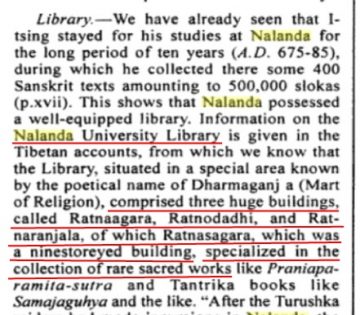
Description about Nalanda University Libraries in the book ‘Paul Monroe’s Encyclopaedia of History of Education, Volume 1’ by Paul Monroe.
Bakhtiyar Khilji, a chieftain, was in the service of a commander in Awadh. The Persian historian, Minhaj-i-Siraj in his book Tabaqat-i Nasiri , recorded his deeds a few decades later. Khilji was assigned two villages on the border of Bihar which had become a political no-man’s land. Sensing an opportunity, he began a series of successful plundering raids into Bihar. He was recognized and rewarded for his efforts by his superiors. Emboldened, Khilji decided to attack a fort in Bihar and was able to successfully capture it, looting it of a great booty.
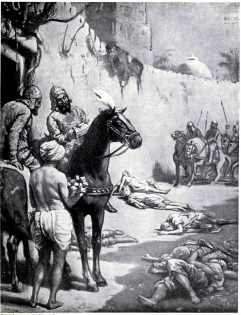
Barbarian Khilji in a painting from Hutchinson’s ‘Story of the Nations’. It depicts Khilji trying to make sense of a manuscript. Source: Wikipedia
Minhaj-i-Siraj wrote of this attack:
“Muhammad-i-Bakht-yar, by the force of his intrepidity, threw himself into the postern of the gateway of the place, and they captured the fortress, and acquired great booty. The greater number of the inhabitants of that place were Brahmans, and the whole of those Brahmans had their heads shaven; and they were all slain. There were a great number of books there; and, when all these books came under the observation of the Musalmans, they summoned a number of Hindus that they might give them information respecting the import of those books; but the whole of the Hindus had been killed. On becoming acquainted [with the contents of those books], it was found that the whole of that fortress and city was a college, and in the Hindui tongue, they call a college Bihar.”
Here is a screenshot of the above quote from Minhaj-i-Siraj’s book Tabaqat-i Nasiri translated by Raverty:
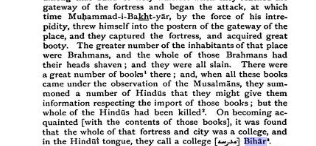
Minhaj-i-Siraj also wrote in his book Tabaquat-I-Nasiri about thousands of monks being burned alive and thousands beheaded as Khilji tried his best to uproot Buddhism and plant Islam by the sword. The burning of the library continued for several months and ‘smoke from the burning manuscripts hung for days like a dark pall over the low hills.’
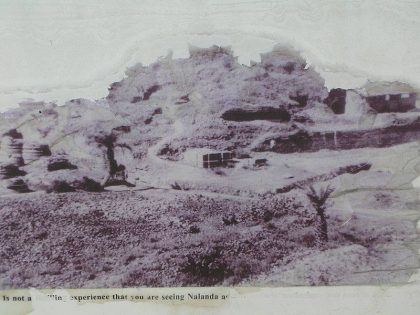
Nalanda University before excavations. Source: Wiki Commons
According to another historical source, Rahul Sri Bhadra, a Buddhist scholar of Ayurveda treated Bakhtiyar Khilji for an illness which was deemed incurable by his court Haqims. Disturbed by the fact that an Indian scholar and teacher knew more than the Haqims of his own court, Khilji decided to destroy the roots of all knowledge and Ayurveda in this country. So he set fire to the Great Library of Nalanda and burned down 9 million manuscripts! Given the three multi-story libraries that also included a nine storey library evidenced by literary records, 9 million is just a number. The number of manuscripts the libraries accommodated that catered to 10,000 students and 2000 teachers must be beyond this number.
It has been wrongly interpreted that Nalanda was only a Buddhist centre. According to finds by the ASI, many artefacts discovered were of Hindu deities. To quote a few lines from a research paper on these finds titled ‘ Recent Archaeological Investigations in Nalanda and Surroundings (Bihar), India ‘ by Jalaj Kumar Tiwari and Neetesh Saxena, published in academia.edu, “ Eighteen stone sculptural fragments, datable from post-Gupta to Pala period, were noticed at Gauraiya-sthana . Among them Uma- Maheshwar, Surya, Vishnu, Chamunda , birth of Buddha and an inscribed votive stupa are noteworthy.” To quote further, in another site of Nalanda were discovered amongst many artefacts were “ Ganesha, Uma-Maheshwar, Brahma (48 × 38 cm), Tara, Vishnu, Buddha , votive stupa , Mahisamardani (70 × 40 × 15 cm) are noteworthy. A stone axe (celt) having 7.5 cm length is also worshiped as Siva-linga at Sati-sthana.”
Shakyashribhadra, the recorded last king of Nalanda fled to Tibet in 1204 CE at the invitation of the Tibetan translator Tropu Lotsawa (Khro-phu Lo-tsa-ba Byams-pa dpal). In Tibet he started an ordination lineage of the Mulasarvastivadins to complement the two existing ones.
When the Tibetan translator Chag Lotsawa (Chag Lo-tsa-ba, 1197–1264) visited the site in 1235, he found it damaged and looted, with a 90-year-old teacher, Rahula Shribhadra, instructing a class of about 70 students. During Chag Lotsawa’s time, there was an incursion by Turkish soldiers that caused the remaining students to flee. Despite all this, “remnants of the debilitated Buddhist community continued to struggle on under scare resources until c. 1400 CE when Chagalaraja was reportedly the last king to have patronized Nalanda.”
Author Shri D.C. Ahir considers the destruction of the temples, monasteries, centers of learning at Nalanda and northern India to be responsible for the demise of ancient Indian scientific thought in mathematics, astronomy, alchemy, and anatomy. Most of the manuscripts burnt contained valuable inputs on these subjects.
Regarding antiquity of Nalanda University, most historians consider 3rd to 5th century. According to ‘Puranas’, inscriptions, and severa l Indian literary historical evidences, Gupta era was during the last 300 years of BCE. As per Vedveer Arya’s book Chronology of Ancient India , the Gupta era commenced from 335 BCE. As the foundation of Nalanda University was laid by a Gupta Emperor, this learning centre flourished from the last years of BCE until Bakhtiyar Khilji destroyed it.
Visit Indian History Real Truth Facebook group to view related posts. This article is part of ‘ JEWELS OF BHARATAM SERIES [TM] ‘ by the author.
Disclaimer: The views expressed here and/or research done are solely of the author. My India My Glory does not assume any responsibility for the validity or information shared in this article by the author.
Featured image courtesy: Masterstudies.
Related Post: Bhaskaracharya, not Newton, Discovered Law of Gravitation; Clue of Gravity in 6000 BC ‘Prashnopanishad’
- Latest Posts

Rayvi Kumar
Latest posts by rayvi kumar ( see all ).
- Onam: Celebrated by Indians since 11150 BCE; Connection with Nawroz - May 20, 2024
- What Hari-Vishnu Inscription in Sanskrit Tell about Shri Ram Janambhoomi - May 20, 2024
- 29000 Year Old Fossil Evidence of Unicorn Described in Rigvedic Hymns - May 20, 2024
Related posts:
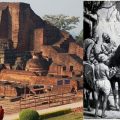
EssayEmpire
Nalanda essay.

Nalanda was the most renowned center of Buddhist learning in India in the fourth–12th centuries. A Buddhist monastic center and major university were located at Nalanda, which is in Baragaon, Bihar state, in east central India, about 90 miles southeast of the state capital of Patna. The village’s association with Buddhism predates the establishment of the university and monastery: Legend has it that the Gautama Buddha visited the Nalanda village several times and delivered sermons there, and that one of his principal disciples, Sariputta, was born near Nalanda village. Nalanda University was established in the fifth century and grew, with more than 10,000 students from many different countries attending the university at the time of its destruction in the 12th century. The Chinese pilgrim and scholar Xuanzang (Hsuan-tsang) studied at Nalanda University in the seventh century and left detailed accounts of it in his writings. Besides Theraveda and Mahayana Buddhism, instruction was offered in medicine, astronomy, and art.
Nalanda, along with many other Buddhist monasteries and temples, was sacked by Turko-Afghan Muslim invaders led by Bakhtiyar Khalji in the 12th century. The monastery and university were destroyed and many of the monks either were killed or fled to other parts of Asia, in particular Nepal and Tibet. This invasion marked the virtual end of Buddhist culture in India until the 1950s, although Buddhism continued to flourish in other Asian countries such as Tibet, China, Japan, and Southeast Asia. In fact Buddhism in those countries was partly nourished by monks from Nalanda who sought refuge. Many historians also believe that destruction of Buddhist centers of higher learning at this time caused the abrupt demise of ancient Indian scientific thought in areas such as mathematics and medicine.
The ruins of Nalanda are frequently studied by scholars today because of their central importance in the history of Buddhist history, culture, and art. Currently excavated ruins cover an area of about 150,000 square miles, and it is estimated that this constitutes only 10 percent of the total area that was developed in the 12th century, as described by Xuanzang. Nalanda is also the name of the administrative district where the ruins are located. The name Nalanda means “the place that confers the lotus” and survives as the name of a Buddhist monastery near Lavaur, France, and two colleges, one in Toronto, and one in Sri Lanka.
Bibliography :
- Chauley, G. C. Art and Architecture of Nalanda. New Delhi: Sundeep Prakashan, 2002;
- Ling, Trevor Oswald. The Buddha: Buddhist Civilization in India and Ceylon. London: Temple Smith, 1973;
- Paul, Debjani. The Art of Nalanda: A Development of Buddhist Sculpture, a.d. 600–1200. New Delhi: Munshiram Manoharlal Publishers, 1995;
- Thakur, Upendra. Buddhist Cities in Early India: Buddha-Gaya, Rajagrha, Nalanda. Delhi: Sundeep Prakashan, 1995;
- Wiggins, Sally Hovey. The Silk Road Journey with Xuanzang. Boulder, CO: Westview Press, 2004.
This example Nalanda Essay is published for educational and informational purposes only. If you need a custom essay or research paper on this topic please use our writing services. EssayEmpire.com offers reliable custom essay writing services that can help you to receive high grades and impress your professors with the quality of each essay or research paper you hand in.
- How to Write a History Essay
- History Essay Topics
- History Essay Examples
ORDER HIGH QUALITY CUSTOM PAPER

Special offer!
GET 10% OFF WITH 24START DISCOUNT CODE
Related posts.

PUMPA - SMART LEARNING
எங்கள் ஆசிரியர்களுடன் 1-ஆன்-1 ஆலோசனை நேரத்தைப் பெறுங்கள். டாப்பர் ஆவதற்கு நாங்கள் பயிற்சி அளிப்போம்
- English Language CBSE
- Supplementary
- Ancient Education System of India
9. Explanation of Nalanda University and Role of Community
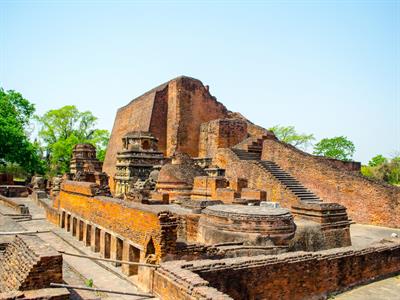
- National Council of Educational Research and Training (2008). It so happened. Ancient Education System of India (pp. 89-97). Published at the Publication Division by the Secretary, National Council of Educational Research and Training, Sri Aurobindo Marg, New Delhi.
- A statue of Xuan Zang*: Vladimir Zhoga / Shutterstock.com
- School Guide
- History Most Important Questions
- Geography Most Important Questions
- Polity Most Important Questions
- Economics Most Important Questions
- English Grammar
- Parts of Speech
- Figure of Speech
- English Tense Chart
- Mathematics
Write a short note on Nalanda University
- History of Nalanda University with Interesting Facts
- Top Universities in Indonesia
- Universities and Humanism: Class 11 History Notes
- Top 10 Universities in the World 2023
- List of Central Universities - In India
- Workshop on "How to Contribute at GeeksforGeeks?" at GLA University
- Amity University Lucknow (AULC) Campus Experience
- Maharshi Dayanand University (MDU) Campus Experience
- Central University of Haryana Campus Experience for MCA
- Alliance University Bangalore Campus Experience
- Chandigarh University Campus Experience
- University School of Automation and Robotics Campus Experience
- Important Ancient Indian History Books and their Writer
- Invertis University Admission Experience
- Sister Nivedita University (SNU) Kolkata Campus Experience
- Chitkara University Campus Experience for B.Tech CSE
- University of Calcutta Campus Experience
- University Of Petroleum and Energy Studies (UPES) Campus Experience
Nalanda University: In ancient Magadha, the Buddhist monastic university Nalanda was well-known. among the greatest centers of study in the ancient world, and is regarded by historians as the first residential university in history. In the fifth and sixth centuries CE, a time that academics have since referred to as the Golden Age of India, Nalanda was crucial in advancing the patronage of the arts and education.
Table of Content
History of Nalanda University
Nalanda university, destruction under bakhtiyar khalji, revival of nalanda university.

When the Gupta Empire was in power, several Indian sponsors helped create Nalanda. Its faculty over 750 years comprised some of the most renowned experts in Mahayana Buddhism. Grammar, medicine, logic, and mathematics were among the six main Buddhist schools and philosophies taught by Nalanda Mahavihara, along with Yogacara and Sarvastivada. Many books written at Nalanda contributed to the growth of the Mahayana and Vajrayana schools of Buddhism. By the time Muhammad Bakhtiyar Khalji’s army plundered and destroyed it, it had been partially reconstructed, and it had survived until around the year 1400 CE.
At the time that Chinese pilgrim Xuan Zang travelled to India, Nalanda was a center of study. He spent time learning in Nalanda with other pilgrims, and he characterized it as:
- The Nalanda professors were individuals of the finest talent and ability. They firmly adhered to the Buddha’s teachings.
- Everyone was required to abide by the severe restrictions of the monastery.
- All during the day, discussions take place. The young and the aged helped each other in turn.
- Men of learning from many cities came here to clear up their questions.
The gatekeeper grilled newcomers with challenging inquiries. After responding to such inquiries, they are only permitted to enter. Seven to eight people out of 10 are unable to respond. Due to its dedication to the growth of India as a powerful force in the fourth century, the College of Nalanda gained significant notoriety, respect, and importance in earlier times and climbed to remarkable stature.
At its height, the institution attracted students and researchers from all over the world, including individuals from Tibet, China, Korea, and Central Asia. The formation of significant showing institutions was aided by the highly organized Buddhist examining methods. The Shailendra tradition of Indonesia was also contacted, according to archaeological evidence, and one of its kings built a cloister within the complex. In the fifth and sixth centuries, the Gupta Empire supported Nalanda, and later under Harsha, the king of Kannauj, Nalanda flourished. The Gupta era’s open social practices contributed to a period of growth and prosperity that lasted until the ninth century CE. The hundreds of years that followed were marked by increasing degradation, and it was during this time that the Pala Empire in eastern India saw the tantric advancements of Buddhism become widely articulated.
The teachers and practices at Nalanda have a significant influence on how Tibetan Buddhism, including its Mahayana and Vajrayana traditions, came to exist. A researcher in Nalanda, Shantarakshita was responsible for the eighth-century expansion of Buddhism in Tibet. Khri-soon-deu-tsan, the Tibetan monarch, welcomed him. He later established the cloister at Samye and served as the institution’s first abbot. He and his student Kamalashila essentially taught the Tibetans how to reason. One of the major exponents of Buddhist atomism as well as one of the Buddhist philosophers of Indian reason, the researcher Dharmakirti, taught at Nalanda.
Nalanda and other nearby monasteries, including the Odantapuri Vihar, were demolished and the decline of the Ghurid dynasty general Muhammad Bakhtiyar Khalji was started. Three sources that are consistent but contain certain gaps that cause doubts and a small disagreement about the precise date support this destruction. A Muslim historian provides the first piece of proof. The second is Buddhist monks’ records that were uncovered in Tibet. The third form of proof comes from archaeological digs when layers of charcoal deposits were found covering damaged artwork, ruins, and Nalanda library remnants.
For several centuries, Nalanda University remained abandoned and largely forgotten. The site gradually became covered with vegetation and fell into disrepair. The decline of Buddhism in India, along with political and social changes, contributed to the neglect and abandonment of the once prestigious institution.
In more recent times, efforts have been made to revive and restore Nalanda University. The revival initiative gained momentum in the early 2000s, with the establishment of the Nalanda Mentor Group in 2007 and the passing of the Nalanda University Act in 2010 by the Indian government.
The revival project aims to recreate Nalanda University as a modern international institution for higher learning, focusing on interdisciplinary studies in the humanities, social sciences, and ecological studies. The new Nalanda University campus was constructed near the ancient site of the original university in Rajgir, Bihar.
With the establishment of the revived Nalanda University, efforts have been made to attract faculty, students, and scholars from around the world. The university has initiated academic programs, research projects, and collaborations with global institutions.
While the revived Nalanda University carries the name and legacy of the ancient institution, it is important to note that it is a modern institution with a different structure and academic focus. It seeks to embody the spirit of knowledge, intellectual exchange, and cultural engagement that characterized the ancient Nalanda University.
Related Links
- Historical Importance of Nalanda University
- Women’s Education in India
- Challenges in Indian Education System
FAQs on Nalanda University
1. write a short note on nalanda university..
Nalanda University is an educational instituted in ancient India and was established during the Gupta period and students from different corners of India came to study.
2. Why is Nalanda University famous?
Nalanda University is over 750 years and the faculty consisted of scholars from Mahayana Buddhism who taught 6 major Buddhist schools and philosophies.
3. Who discovered Nalanda University?
Nalanda University was discovered by Sir Francis Buchanan.
4. What are the three special features of Nalanda University?
The three special features of Nalanda University are as follows: Nalanda university as established in 5th century by Kumargupta I. Famous library of Nalanda is known as Dharmaganj. There are three multistorey building which are Ratnasagar, Ratnodadhi and Ratna Ranjak.
Please Login to comment...
Similar reads.
- History-MAQ
- School History
- School Learning
- Social Science
Improve your Coding Skills with Practice
What kind of Experience do you want to share?

- Latest Updates
- Sanchi Stupas & Monuments
- Key Monastery
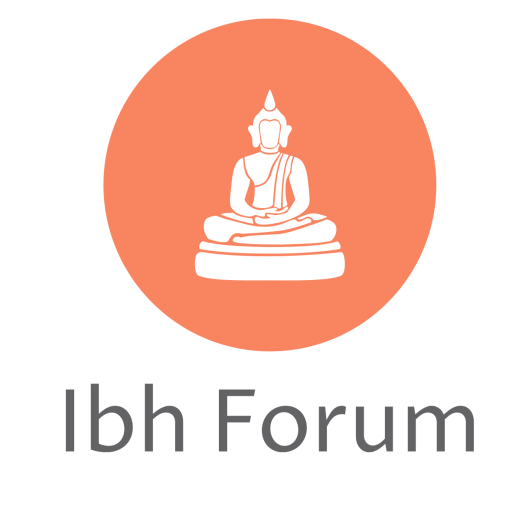
Nalanda University: Unraveling the Legacy of Ancient Wisdom and Scholarly Excellence
(An insightful conversation with Nhan Vo , Researcher on Nalanda)
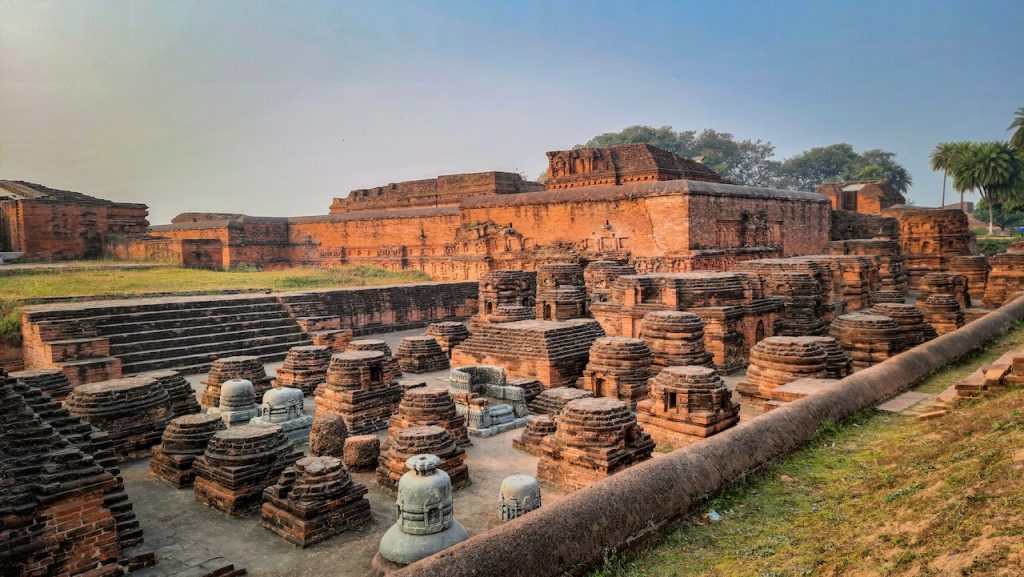
Research Journey
- Could you share your motivation behind undertaking this extensive research on Nālandā University? What sparked your interest in this subject, and what were your main objectives throughout the ten-year-long data collection process?
This is a long and not easy question, and it contains 3 points : My motivation, what causes the interest, and the main objectives. Since the question is related to many causes & conditions and the events that crossed my life in the past, I will try to describe it in the simplest way possible.
I was born in a Vietnamese Buddhist family and grew up with a strong background in Math and Computer Science. So, when any new concept appears clearly in my mind, the attitude of doubting and questioning if it is true comes naturally.
I first learned the term “Nalanda” when I attended the teaching of His Holiness the Dalai Lama in California (2006) . At that time, the title Nālandā just arose in my mind. It came up with one irritating and critical question: Why am I a Buddhist for life, but still not knowing well about this “Nālandā”? As time passed, I learned that many great Mahayana Masters also lived and worked there; specifically, one of them is my favourite Master, Xuanzang ( 玄奘 ). A few years later, even with so much information I could collect/learn about the institute, my wonder about it did not decrease at all. However, the final decision for full engagement in research about Nālandā only came after a very vivid and sad dream (circa 2011-12).
In a vivid dream, after coming back to Nālandā with a much younger religious brother from an errant duty after a few months. I saw Nālandā getting destroyed, and I was very frightened. All things that I know of were burnt to black; the remains are broken bricks and walls with a bad smell. I cried as a kid who lost his mom. The feeling was so natural and strong as I was there; the image in the dream was so alive that even after waking up from that night, and many times later when thinking about what I saw in the dream, I continued to cry and feel as if the event just happened.
So this is the final trigger that pushed me to eventually stop my worldly job as a scientist and go to India for 5 years to learn the truth about Nālandā and also to understand deeper about the Buddhist tradition.
For easy saying, the objectives of my research are:
a. To resolve my quest about Nālandā, including the dream .
b. As stated, not only myself but also many other Buddhists, specifically the Vietnamese, do not know what Nālandā is. So, it seems a big mistake if you earnestly learn Buddhism but don’t really know its true history or where the teachings that you currently learn and practice come from and how they were transferred to you.
c. As same as all Buddhists, my goal in life is to see all sentient beings get their true happiness . So if my work may contribute some productive information or facts , which can help Buddhist students to know how authentic and how valuable the teachings that they are following are, then this is a cause for my happiness as well as the graceful appreciation for the schools, the traditions, and the places that have hosted the Dharma teachings for thousands of years also.
Lastly: How do we define the “Nālandā” term ? To me, it is not just the monastery itself since doing so will narrow down the most important factor that Nālandā was the main Buddhist philosophy centre in India particularly, and the largest philosophy centre in the world generally. Not only religious, but it is also the centre of logic school, art, and architecture.
We may find that His Holiness the Dalai Lama’s 14th was fully true: Tibetan Buddhist tradition is Nālandā tradition (not more, not less). Chinese Buddhist tradition and some other Mahayana countries also are a kind of following Nālandā even though they may become self-transforming later. But at least at the time upto Xuanzang (玄奘) and Yijing (義淨) time, it fully adopted the Nālandā tradition.
The scope of these essays is not to find the absolute facts about what happened over a long period of thousand years ago but to find a clearer picture of the place named as Nālandā and its role within Buddhism, especially Mahayana and its tantric subschools. It also tries as much as it can to indicate the earliest source of fact that can be found through scriptures, writings, and the evidence of archaeology.
With all the above mentioned, the presentation of the essays contains two kinds of information : (1) The facts, including the creation, rise, and destruction of Nālandā, its activities, depicting how people live, learn, and practice, and lastly, the philosophy, the teachings, and the paths. (2) The information that is exposed in many other aspects about Nālalndā, but they are implied within stories or legendaries. Those are very important since they may indicate and be the imprint to show details that are the actual image of Nālandā .
Research Methodology

2. We understand that your research involved extensive data collection from Tibetan, Indian, and Chinese scriptures, as well as archaeological evidence. Could you shed light on the research methods you employed, the challenges you faced , and how you ensured the accuracy and reliability of the gathered information ?
Following Buddha’s teachings, there should be reliable sources of valid cognition for the proper knowledge: Direct Sense, Inference by suitable logic/critical thinking, and the knowledge taught by reliable persons (such as Buddha himself and his excellent Bodhisattvas). So, pick this as a guideline; my strategy goes with three stages: Collect data, filter them, and select what to present. But where is a good and reliable source for collecting data in the regard of more than thousands of years of history?
a. So, the first sources and facts are the archaeology evidence which may come from: the Nālandā area itself, any other related archaeology evidence that is tightly related to Nālandā (such as Vikramasila Monastery ) and any other facts found directly mentioned or refer to Nālandaā and its tradition. Those include nowadays things found in historical Museums around the world (or books/documents about them, for example, those India-released archaeology bulletins or many regional archaeology journals that I can find based on Google).
Some details: At 1st, as brainstorming, I tried to access all of them, which I can skim reading in the Table of Content of any articles containing the word “Nālandā”. So separate those on one side. Also try to get the pictures of those facts as much as I can, including paying fees or purchases . (Especially the National Museum in Delhi and Nāladā itself were visited by me many times). The archaeological facts are always in the “Direct Sense” Truth. Also, the content of the facts such as script stones, Seals, symbols, statues, and architects are countless values of the truth.
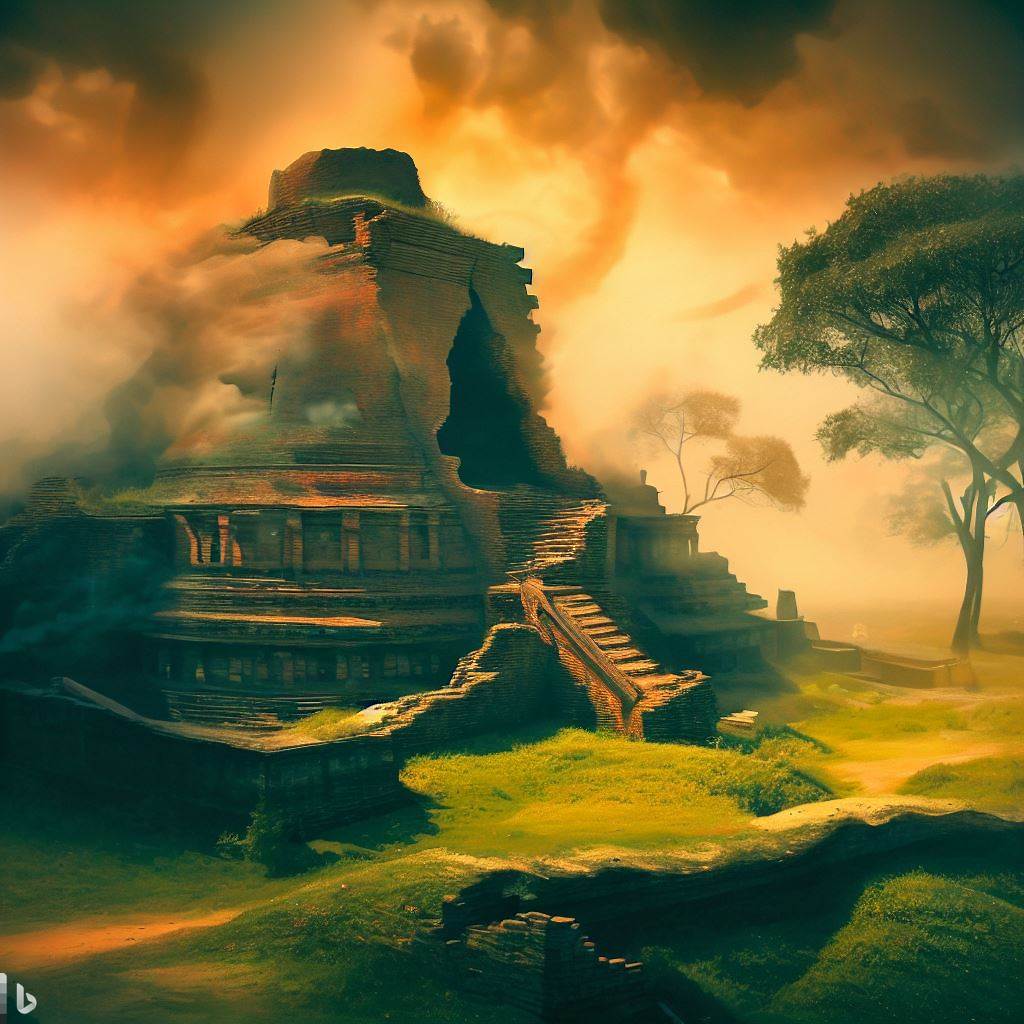
b. This is the reasonable reference or infer sources: Where do they come from? Even the three libraries of Nālandā were burnt , but their transferred scriptures are kept elsewhere. It may contain some dialogues; however, following the teaching about the four seals of Buddha , we may identify which is right and which is not. We can strictly compare or critically evaluate the main idea to know if scripture is authentic. The scope of my research is NOT to give a nailed point review of the particular objects, but with the general view, we can draw the major vital conclusions. So, with this, I tried to search all available related scriptures. The two most vastly and importantly inherited sources of literature of Nālandā are Chinese and Tibetan Buddhist scriptures. Besides, the recorded history of many Buddhist places (and even from the Iranian language may also contribute some anti-facts about how Nālandā in its last breath). So sad that India itself does not keep full or enough information or scripture sources about the history of Nālandā even though there are some significant rebuilds from the historians) – So, We all know the Kangyur and Tengyur collections in Tibet are the most evidence source of scriptures the prominent experts consider the most extensive library, copied and translated from Nālandā tradition. Furthermore, those literature written in Chinese such as by Xuanzang (a prominent student with more than six years in Nālandā), Yijing (11 years studied in Nālandā), as well as the Tibetan historian such as Tāranātha (ཏཱ་ར་ནཱ་ཐ་), Bu-ston (བུ་སྟོན་རིན་ཆེན་གྲུབ་) and Gö Lotsawa (འགོས་ལོ་ཙཱ་བ་གཞོན་ནུ་དཔལ). Together they contribute a wonderful picture of Nālandā.
Moreover, multiple much smaller information sources may greatly help learn about Nālandā, especially those from Kashmir, Dunhoang, Mongolia, Nepal, and Bhutan.
Do we accept historical information as reliable: At 1st, we have to make sure of what purpose and motivation each writing or scripture was written down. How and why? Does the author try to gain any personal fame/money/power by writing such works? Also, the critical Buddhist morality question may greatly help: if the authors are real Buddhists. The way of understanding these will make his/her works become reliable or not.
c. The teachings of Buddha and the people of Nālandā were another source of reliability; Besides, those collections are generally reliable. Details of the work of the people of Nālandā may contribute massive facts/data to help us to verify or prove whether the later author sources (such as the translations in English, and German, about Nālandā) are reliable or not. This requires users to know either Tibetan or Chinese and how to delve through thousands of scriptures. In this direction, I was lucky to get help from different Buddhist organizations, specifically from Tibetan and Chinese Taiwan. I also developed a specific software that can simulate UNIX grep or Regex tool that uses for the Tibetan language to search any specific phrases with many operations such as (AND, OR, XOR, NEAR, LENGTH and other operators that are useful for searching into the collections) So with that many saying, quoting or even sometimes dialogue spelling will be verified.
d. Anyway, no one can ensure 100% any historical information that may or may not be accurate within a thousand years past, especially if the info came from the time the writing system was not yet fully developed as Buddha Shakyamuni time. However, some levels of logic may help to draw an acceptable resolution out of logical and critical thinking, which are not against each other or against the time-space historical conditions. Additionally, with the above, the Prasangika school defined some strict levels about valid cognitions (e.g. every evidence/valid cognition must be content within the proper causes and effects; it also must NOT conflict with all its timely accepted valid cognitions, …) These tools are excellent for discarding information that may need to be more suitable or accurate. So my research presents data concerning three views: (1) the facts that can be proved, (2) the information cannot be proven (yet), but it may contain/imply precious true stories, (3) The legendary stories may contain values about history, culture, philosophy, way of living, That info is not feasible and, against common sense, discarded since it may not contain any usable info.
Lastly, we should learn as much as possible about the local places (here is Magadha ), culture, customs, civilization, and even the other religions in the period in which the observed event occurred. (this is as aforementioned: Time-space cause-effect); however, with a person, we also have to learn where/when/what country he came from, what background/caste he has, and also what area he was good at (just a simple example: with Asanga , if some collecting information stated that he might have some activities that are not in accordance to “Mind Only” school then it should be something wrong with it … )
Difficulties Faced:
i. Very difficult to make a general map of the timeline: The scripts and evidence (may have Carbon read but cannot state 100% what cycle of history)
ii. the earlier time was storied virtually and traditionally transferred by “word of mouth”. So, working on matching many details in the scriptures/material/ to regain the order and the details are often complex.
iii. Mismatched information about the same person or even. Notably, the more famous a person is, there will be more mismatched legendaries about him. The most famous case is Nagarjuna.
iv Too little information: reversely, some Nālandā people who are less famous, even if they may have a considerable contribution to Nālandā school, then the information about them reversely too little (e.g. the case of Vimuktisena and Harihabra)
v Require a broad knowledge of different majors/subjects/sciences, including history, Buddhist and non-Buddhist philosophy, logic, computer skills, social, and languages.
Significance of Nalanda

3. Nalanda University holds immense historical and cultural importance. What makes Nalanda unique, and why is it considered a treasure trove of knowledge in the Buddhist world ? How does it differ from other ancient centres of learning?
Saying about the object of Nālandā itself: What made Nālandā unique? So clearly the history of its operations, the dimension, the scale, its influence/impact on other religions, countries and the world, the schools and subschools of philosophy, the logic school, the tradition of debate, the tolerance to others, the morality, the size and organization that are born and succeed in Nālandā; the people who actively stayed, how they lived and what happened to them, how they study, practice and transfer the Buddha teaching and the very last important point: the contribution that the people of Nālandā give for the world. Also, how they transfer/transmit their message and how they interact with other communities plus relationships with the local governments as well to survive as a non-breakable linkage from Buddha to the 11-12 century in thousands of years , and lastly, the large number of students that are not only Buddhist and Indian but also for the other religious and international countries as well. Those factors certainly define the unique characteristics of Nālandā.
That also defines how it is world history’s most significant treasure source. Remember that those massive scriptures, which are mostly now found in Tibet and China etc, are directly inherited from Nālanda. This must be recognized as Nālandā ‘s heritage as well. Those include massive value in scientific developments, including philosophy, medicine, psychology, logic, architecture, art, and Buddhist practices. So these values should be noted for reuse, relearned, and redeveloped for application in the future.
About the other ancient institutes: primarily, the essay has one chapter that mentions Vikramaśila Institute , but it is not to compare them but to show this institute was a sub-school of Nālandā.
Nalanda’s Influence
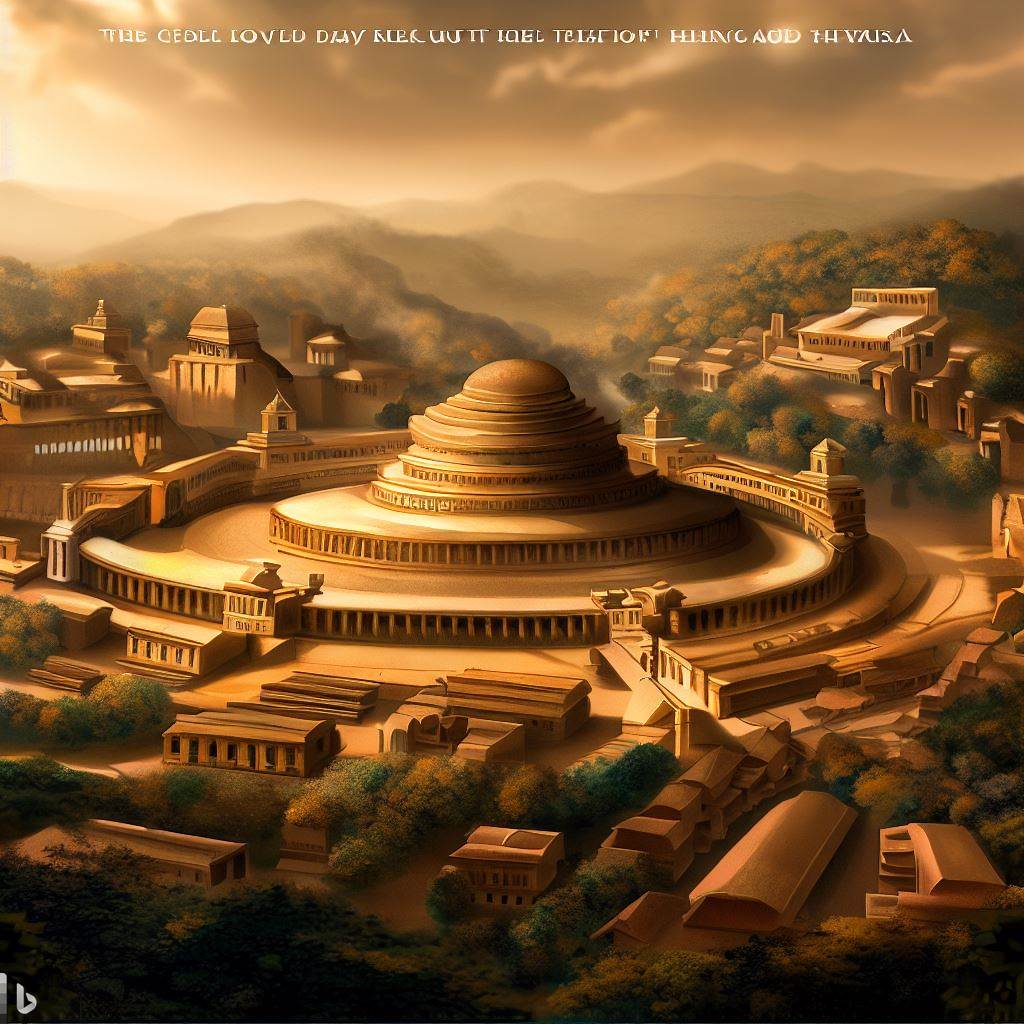
4. Nalanda University attracted scholars and students from various regions. Could you elaborate on its impact on the spread of Buddhist teachings and its contribution to intellectual, philosophical, and spiritual growth during its prime?
The impact of Nālandā cannot be mentioned in such a short list or just in a limited interview text. A few hundred pages of my essays indicated the answer to your question. However, I may try to bullet a few significant impacts.
a. The role of Nālandā in the world of Mahayana Buddhism is crucial – including its heavy influence on any sect, any school, and any aspect of the student/practitioner life learning, ceremonies, ritual, behaviour, morality, knowledge/teachings and practice.
b. Not only with Buddhism, but the school also influenced impact on to India itself in culture, art, and society. Especially in most of the regimes, Nālandā Buddhism was one of the significant recognized religions (in such cases, the government/kings also contributed tremendous support for spreading Buddhism to the world and India), also through the history of activities, the school continuously transferred /spread out the compassion and wisdom and ways to do it of Buddha and his sons. The influence of culture may cause positive changes in other religions as well. There are times when many states within India have Buddhism as prominent religion, and it still has some effects on the Indian people today (in their culture of non-violence, for example ).
c. Same amount of teachings of influence also applied to China, Tibet, Indonesia, Nepal, Bhutan, Mongolia, and later Japan, Korea, and Vietnam. It still has a significant impact on those countries today. Nowadays, Buddhism is the most peaceful religion and the third largest one in the world, so a significant role of Nālandā also causes these results.
Teaching Tradition

5. Nalanda is renowned for its unique pedagogical methods . Could you provide insights into the teaching tradition followed at Nalanda University? How did the teachings and practices at Nalanda shape the students’ understanding of Buddhist philosophy and cultivate intellectual curiosity?
To get the data for this answer, we have to dig into many sources, including the writings of those monks who lived in the school mentioned in question 1, the transmitted traditional model of living, training and practice, which is still being applied in some Buddhist countries today, especially Tibet, Nepal, and Bhutan . However, the most substantial evidence should be counted from Tibet. We can learn the teaching program currently in this community to see the pedagogical methods that, if applied.
So it entirely depends on training purposes, so they will have unique methods suitable to the theoretical, the ideology, the philosophy proposed/proved the aims of training the school. Against those aims of training came from the ultimate goal of Buddhism or the Buddha’s teaching: to Bring all sentient beings from the status of impure, full of suffering and ignorance (in the means of unknowing the fundamental truths and short sight about the world/env, and causing all kind problems from this ignorance), and wandering in the cyclic world up to the status of complete knowledge of wisdom as omniscience, liberated from all afflicted situations, and found a specific path to escape out of the cyclic existence. So, To see a more profound method, we have to acknowledge that Buddhism, especially the Nālandā tradition, all uniquely follows the law of Dependent Arising theory, which part of it is the causes and effects laws (that modern science and physics accept as the ultimate law) and also any view about the status of phenomena or the world, also depend on the personal/human views which came from their mind situation, the potential karma, knowledge and the conditions of it.
So, with that in mind, we can try to check the closest pedagogy methods of Nālandā is the tradition that is still kept from many Tibetan Buddhist universities today (concerning knowing there may be some minor differences with the original).
For example: Why do students have to learn Logic debate from the beginning? Why does the school program start with learning definitions of anything, including what colour & shape, what is true or false, what are the person and the world and up to what are mind and their attributes/status? Is that similar to modern math that any math/science subjects are required to accept its axioms and principles? (Only Buddhism may undergo a much lower level that touches any aspect of life). So remember all the questions to see some insights about the current methods. I just did an example in a training program of Nālandā: Those are listed from low to high, from freshman to senior (and to final level), from easy to difficult, and from simple subject to the most complex subject, and then the latest stage of training is practising. However, this does not mean forcing students to learn all of them but is only highly recommended for novice students. At a level of high intelligence, a student can skip and jump to a level that he may be capable of and also make sure he should pass all tests (by debating) from the lower levels to ensure his path is proper. Why?
a. Learning all physical and mental world definitions, including definitions, definiendum, statuses, behaviours, properties and the relationships between the terms if available (such as sub-classes, opposites, exclusive, mutually exclusive, inclusive.
b. After that, Logic subject training is provided . This is similar to a kind of logic math; however, it is added another level of giving an example for each type of statement/fundamental theorem since Buddhism is NOT targeted pure theoretical but the real world of application, especially in deb bat, to find the Truth / Liberation. With this learning, students can later be capable of judging what is right or wrong, what is suitable or not. What should be followed and not?
c. Brief core of philosophy: The student then learns all primary philosophy schools, Buddhist subschools and non-Buddhist philosophies. Especially within Buddhist Schools, it presents all the significant issues and advantages of each main /sub-school (why?) So each person may find that particular school tenet may be well suitable for his/her capacity in order to learn practice accordingly and adapt to the capacity as well. For each significant school, the teaching includes Definitions, subschools, etymology, principles of beliefs and assertions, terms, path, and result of the path.
d. After that, students have to spend a long time on Prājñaparamita. (If you are Indian, you should know what it means). (the program may take 4-6 years) Students must learn Mahayana school’s complicated, deep, higher-level philosophy here. especially the path (please self-ask yourself why and find the proper answer)
e. The primary teaching and the most challenging subject is the Middle way (Madhyamaka) . The primary teaching comes from Nagarjuna and his students.
f. Finally, students can have training in practice at a deep /high tantric level. During many years of learning, students learned many principles and foundations and were already involved in training in meditation and religious practices. Now he/she only learns the highest levels. He or she can then go to a solitary place for more profound meditation ( usually in 3 years ) or join the same or other organizations to continue life,
g. So during the primary program training: all students are suggested to learn very well in 5 sciences (that are only available in Nālandā and the world at its time) and learn about morality, meditation, and wisdom, which are contented in 3 baskets (Sutra, Vinaya, and Abhidharma)
So to gain more “insight”, please read the following idea from Xuan Zang, which is briefly depicted: Students learn morality, meditation, and wisdom, how to behave in relationships with gurus and also in the school rules, and obey the laws of Buddha. All must learn sūtra, vinaya, and Abhidharma ; those are in Sanskrit, and all students practise non-violence .
In its (Nālandā) long history, no sangha created any taint in morality or the way of life. Every day, there are about 100 teachings in which different topics are discussed. Students never waste time and attend classes that may inspire/interest them. Whenever there is a talk in forums, there must be an expert teacher about the talking topic. The main topics include hetu vidyā, śabdavidyā, śilpa-sthāna-vidyā, citkitsā-vidyā, mantra śāstra and ādhyātmika-vidyā . The other topics are also learned as sāṃkhya, yoga, nyāya, Sanskrit, vyākaraṇa, jyotiṣa, kāvya, alaṃkāra, purāṇa, itihās, dharma śāstra , and Four Vedas Teachings and their sub-branches (Vedāṅga) . Specifically, in Buddhism, there are four primary schools vaibhāṣika, sautrāntika, cittamātra, and Madhyamaka.
The whole program may take from 17 to 21 years on average; why does it take so long? (However, in the case of Xuan Zang, he seems only to need to learn in about 6-7 years; why?)
Remember, the school is open to Buddhist monks and all laypeople (regardless of caste and religion). Students may have to pass some entrance tests; however, that is to admit only the suitable qualified candidates. The tolerance of Nālandā can also be seen through its training program.
Five sciences, logic, debate, philosophy, practice matching/according with theory/schools, tolerance to multiple schools and even to non-Buddhist thoughts
This question was mostly answered in the other question, so I would like to omit it.
Rediscovering Nalanda
As a researcher dedicated to Nalanda, what are your thoughts on the ongoing efforts to revive Nalanda University as a centre for Buddhist studies and academic excellence? How do you envision its future impact on preserving and disseminating Buddhist knowledge?
I wish the University could be revived. There are already many schools either claim the name of Nālandā or say they are doing the schools’ tradition; however, in order to judge, one should look into some points: At 1st, you need to define what is Nālandā and its tradition; what is the goal for what you wanted to achieve. This should be identified clearly and in full detail. Always remember — Wisdom and Compassion is the real point here. Then you can lay out what needs to be taken and what needs to be avoided.
I do not know how far the current wave of building Nālandā University is going on; Here are some instances of my mind — about the questions that need to be resolved before knowing/saying any further:
1. Is that the “traditional Nālandā” reflexes in the school program, and training, especially the fundamental goal of Nālandā (e.g. it is to bring all good heart & qualified people regardless of layer or casts to real happiness and the harmonic?)
2. Do the universities follow Buddhism or at least treat Buddhist philosophy as a vital major ? (please find out why this is an important question)
3. How advantageous may the school plan implement in order to get such a high level of scale in science and philosophy, deep in knowledge, especially in solid areas of Buddhist science including logic, psychology, mental treatment, self-enhancing (by meditation), philosophy and even the foundation of modern science.
Also, to reflect the primary goal of Buddha in the teaching of the paths: reaching the highest level of Compassion and Wisdom, including worldly wisdom. So the path of training of the school is supposed to go on par with this path: A student not only have the highest level of wisdom (if available) or professional knowledge, he/she must also have a warm heart and is an actual human being which has the sound and meaningful morality and altruistic in the way of life (How to train this during schools programs? To tell the truth, I wish to see this point in good shape of implementation yet!)
It is NOT such simple, since in my essays, the research points out that many such the claimed “Nālandā” universities are failed!
Way Forward

You may have to cautiously & carefully learn from good and bad cases either to draw out the lesions before actually starting, including knowing the causes and conditions for applying any succession and avoiding failures from the other cases.
One of the good cases is that the tradition still exists in Buddhist Universities, but we need to know what to take and what not since it looks like the schools you are building are not for monks or nuns.
How to spread the fundamental knowledge and love/likeness about Nālandā among all people of India 1st and later in the world. Why? Without the actual knowledge/love of Nālandā, you can never get the genuine support needed! Whom to serve/get 1st, then what to serve/get later.
How to convince and gather real inspiration and interest from the government and internationally. This one time, I saw, but sorry to me, it failed since the school did not go well. Why? For example, a university board of leaders needs major decision-makers who are at least supposed to know Buddhism and its philosophy correctly (not talk about a more profound level yet). And how the teachings of Buddha are respected and applied in the schools’ activities; this is not to say a student has to recognize who Buddha is. However, He/she is supposed to know what the aim of Buddha means and what the school’s / activities are to present that goal (not another way around as to encourage fame or money first). Allway “keep in mind” the money or fame will come after the high value in the quality of training/teaching, theory and practice, ineffectiveness, and especially in advancing the harmonic and morality (not materialism).
First, to get excellent leaders of the school who have both compassion and wisdom, then to attract the outstanding heart teachers following up. Moreover, with the acknowledgement of what is Nālandā from everyone around, it will thrive and be healthy.

Pandemic Research -MAVERIC – Clinical Science R&D Service – VA Boston Healthcare System. Expert on the Historic Nalanda University.
Leave a Comment Cancel Reply
Your email address will not be published. Required fields are marked *
© Copyright 2022 IBH Forum
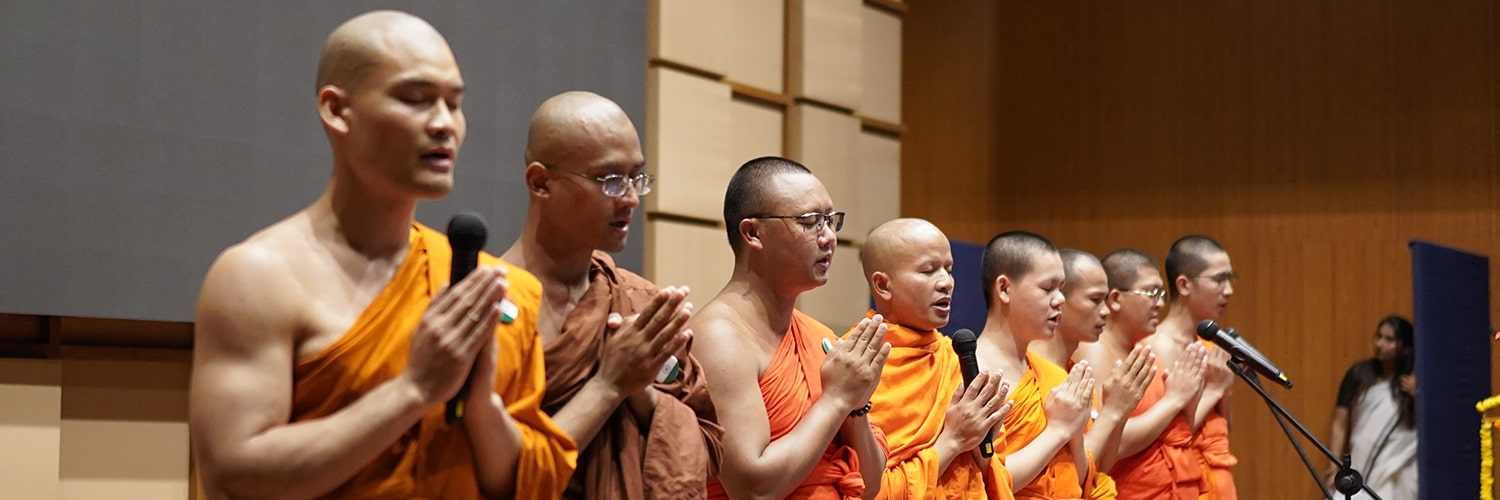
Programmes Offered
- Eligibility Criteria
- Instructions for filling Application Form
- Admission Process
- Fees Structure
- Admission Brochure
Admissions 2024
ADMISSIONS 2024
Applications open for all students. Keep watching this space for additional details. Currently, the University is offering the following programs:
Masters (M.A./M.Sc./M.B.A.)
- Duration (Years)
- MA in Hindu Studies (Sanātana Dharma)
- MA in World Literature
- MBA in Sustainable Development and Management
- 02 (With an Exit Option after 1 Year with Diploma)
- MSc in Ecology and Environment Studies
- MA in Historical Studies
- MA in Buddhist Studies, Philosophy and Comparative Religions
- M.A. in International Relations and Peace Studies
- M.A. in Archaeology
[Apply here]
Last Date for Masters Programs Admissions: May 31st, 2024
Doctor of Philosophy (Ph.D)
- PhD in World Literature
- PhD in Sustainable Development and Management
- PhD in Ecology and Environment Studies
- PhD in Historical Studies
- PhD in Buddhist Studies, Philosophy and Comparative Religions
- PhD in Hindu Studies (Sanātana)
All applicants need to demonstrate a high level of competence in the English language, as all courses will be conducted in English. English language test scores of TOEFL, IELTS, TOEIC, PTE, STEP are accepted.
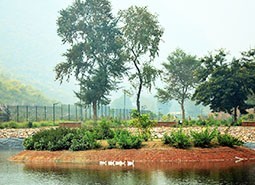
The University presently offers post graduate programmes in the Schools of Historical Studies and Ecology and Environment Studies. From the academic year 2016-17, a new programme is offered by the School of Buddhist Studies, Comparative Religion and Philosophy.
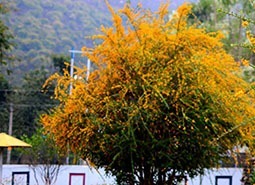
Eligibility
Graduate work in Nalanda is multidisciplinary, intense and intellectually demanding. The University has high academic standards, the minimum requirement is a Bachelors degree and proficiency in English language. Each School may however have a higher eligibility criteria.
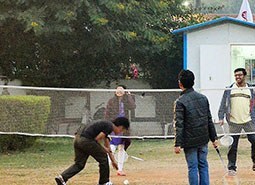
Admission Procedure
The process includes a preliminary shortlisting based on eligibility, academic performance, and completeness of the Application form and final shortlisting based on qualitative aspects like SoP, referee’s recommendation, written work etc. The final selection is after a Personal Interview of the Candidate.
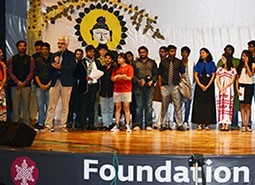
The Tuition fees is a composite fees that a student pays towards academic and allied activities at Nalanda University. Admission fees is a onetime non-refundable fees that a student pays at the time of confirming his/her admission at Nalanda University.
Send Your Query
- History and Revival
- Office and Administrations
- Common Archival Resource Centre (CARC)
- ASEAN-India Network of Universities (AINU)
- Academic Programmes
- Courses and Curriculum
- Career Prospects
- Research Projects
- News and Events
- News And Events
- Centre for Conflict Resolution and Peace Studies
- Centre for Bay of Bengal Studies
- NU Centre, Neemrana
- International faculty
- Diploma Programmes
- Certificate Programmes
- Admissions Brochure: Spring 2024
- Admission Open: Spring 2024
- Library Committee
- Library Hours
- Rules and Regulations
- Organizational Membership
- Library Team
- Discovery Service
- Remote Access of e- resources
- CAS/SDI Service
- Information and Reference Services
- Orientation programme for users
- Inter Library Loan
- Reprography Services
- Anti Plagiarism Tool
- Digital Library
- Explore Our Campus
- Students Life
- Academic Calender
- Student Handbook
- Student Residences
- Students Affairs
- Student Gallery
- Share full article
Advertisement
Supported by
A.T. Ariyaratne, a Hero in Sri Lanka for Helping the Poor, Dies at 92
He built Sarvodaya, an organization that battled dismal living conditions in his country’s villages and championed peace and mediation during a vicious civil war.

By Adam Nossiter
A.T. Ariyaratne, a Sri Lankan who fought to alleviate the terrible living conditions of his country’s rural poor, creating a Buddhism-inspired social services organization that operates in thousands of villages, died on April 16 in Colombo, Sri Lanka’s capital. He was 92.
His death, at a hospital, was confirmed by his son Dr. Vinya Ariyaratne, in an interview.
Sometimes styled in the country’s media as a Sri Lankan Mahatma Gandhi, Mr. Ariyaratne preached brotherhood across ethnic divides and, with the help of volunteer labor and outside donations, brought aid to Sri Lankan villagers struggling with poor sanitation, insufficient food, broken roads and inadequate shelters and schools.
Hailed as a national hero and modeling himself on Ghandi’s ideals, he grew his Sarvodaya, or “Awakening of All,” movement from a presence in a handful of villages to operations in more than 5,000 of them a half-century later, digging wells, building schools, fixing roads, providing credit and more.
“Sarvodaya,” a term first used by Gandhi in India and inspired by the writings of the English critic and essayist John Ruskin, meant “the well-being of all,” especially the least fortunate, in Mr. Ariyaratne’s interpretation, as he explained in an essay in the anthology “The Sri Lanka Reader.” Ruskin’s essay “Unto This Last,” with its egalitarian, anticapitalist underpinnings, was a particular inspiration.
But Mr. Ariyaratne worked primarily in a time and a place largely unreceptive to his peace message: during Sri Lanka’s vicious civil war from 1983 to 2009, in which mass murders, civilian executions and torture were the norm. The war limited his impact, according to some scholars and observers, as the country reeled from repeated bouts of violent conflict between the majority Sinhalese Buddhists, like Mr. Ariyaratne, and the minority Tamils, mostly Hindu.
In the midst of the war, in 2001, Barbara Crossette , a former foreign correspondent for The New York Times, wrote in the Buddhist magazine Tricycle, “Sarvodaya’s success has been small, and the carnage continues.”
Much of the Sarvodaya Shramadana Movement was dismissed as “naïve and unrealistic” by the Oxford and Princeton scholars Richard Gombrich and Gananath Obeyesekere in their 1988 book, “Buddhism Transformed.”
But others, pointing to Sarvodaya’s village-level projects, insist that Mr. Ariyaratne’s movement had positively affected thousands of Sri Lankans and that his Buddhist precept of respecting all lives had helped his country through a relatively peaceful period since the end of the war.
“The legacy was to provide practical ways people could address the problem of suffering,” John Clifford Holt, a veteran Sri Lanka scholar and emeritus professor at Bowdoin College, said in an interview. “He provided a progressive, this-worldly orientation to Buddhism. He took these ideas and inspired the volunteers. They built roads and dug wells, they provided microfinance for women.”
In Sri Lanka, observers and analysts acknowledged that Mr. Ariyaratne’s efforts to lessen the country’s strife had uneven results.
“He tried to ensure that if there was conflict, it was transformed into coexistence,” Paikiasothy Saravanamuttu, executive director of the Centre for Policy Alternatives in Colombo, said in an interview. “Ariyaratne’s work has not been able to prevent that. But where he’s seen it happening, he’s intervened, at the local level.”
Sarvodaya had “an impact on bringing Tamils and Sinhalese together in various parts of the country, but it was not large enough to really make a big dent,” said Radhika Coomaraswamy, a Sri Lankan and former U.N. special representative for children and armed conflict.
Still, Mr. Ariyaratne’s efforts to foster peace were nothing if not dogged. Soon after the first deadly anti-Tamil riots in Colombo in 1983, “Sarvodaya began to organize camps for the refugees and aid for the victims,” George D. Bond wrote in “Buddhism at Work,” his 2003 study of the movement.
Mr. Ariyaratne, he added, used his “village network to provide food for the refugees, construct medical clinics, construct shelters and rebuild houses and schools.” He also established preschools and credit facilities for villagers as well as nutrition centers for children and the elderly.
As the violence continued, he organized a peace march in the south of the island that was stopped after only a few miles on the order of the president at the time, J. R. Jayewardene . Mr. Ariyaratne organized other peace marches in the following years, often to the irritation of the country’s leaders, who resented his popularity.
In 1994, traveling to the country’s north as a mediator, he met with leaders of the Tamil rebel movement, the Liberation Tigers of Tamil Eelam. “It was not successful,” Jehan Perera, executive director of Sri Lanka’s National Peace Council, who was part of the mission, recalled in an interview.
Sarvodaya organized a mass meditation for peace in 2002 that was similarly ineffectual, though it remarkably attracted 650,000 people across ethnic divides, according to Mr. Bond. It wasn’t until 2009 that the government brutally stamped out the remnants of the rebel movement, engaging in more civilian massacres.
Mr. Ariyaratne had early on shed any illusions about the Buddhist underpinnings of the Sri Lankan state. “Even though, historically and culturally, Sri Lanka may claim to be Buddhist,” he wrote in 1987, “in my opinion, certainly the way political and economic structures are instituted and managed today, they can hardly be called Buddhist either in precept or practice.”
Ahangamage Tudor Ariyaratne was born on Nov. 5, 1931, in the town of Unawatuna, British Ceylon, as the country was known before it gained independence. He was the son of Ahangamage Hendrick Jinadasa, a wholesale trader, and Rosalina Gajadheera Arachchi, who managed the household. He attended Mahinda College in nearby Galle and received a degree in economics, education and Sinhala from Vidyodaya University in 1968.
Years before, Mr. Ariyaratne had embarked on a trip that transformed him and became the foundation of his movement. In December 1958, while teaching science at Nalanda College, a leading secondary school in Colombo, he took 40 of his students and 12 teachers to a nearby low-caste village, Kanatoluwa, where they spent days helping its residents in various ways, including digging wells, building latrines and repairing its school. Thus was born Mr. Ariyaratne’s concept of “Shramadana,” or “Gift of Labor,” a project that grew throughout the 1960s to encompass hundreds of voluntary labor camps, as Mr. Bond characterized them.
Mr. Ariyaratne saw Shramadana as transformative for both the movement’s thousands of volunteers and the villages themselves. His goal, he wrote, was “a dynamic nonviolent revolution which is not a transfer of political economic or social power from one party or class to another but the transfer of all such power to the people.”
By the early 1970s, he was attracting funding from the Netherlands, Germany, and Switzerland. Sarvodaya became the country’s largest nongovernmental organization, according to Mr. Bond. Though clashes with the government over the movement’s nonviolent stance led some outside donors to withdraw funding for periods, Mr. Ariyaratne always managed to bounce back.
In addition to his son, he is survived by his wife, Neetha Ariyaratne; three daughters, Charika Marasinghe, Sadeeva de Silva and Nimna Ganegama; two other sons, Jeevan and Diyath; 12 grandchildren; and sister, Amara Peeris.
After his death, Mr. Ariyaratne was given a state funeral attended by the country’s president, Ranil Wickremesinghe, and prime minister, Dinesh Gunawardena.
“We see him as a model human being who attempted, amid great challenges, to bring people together,” Colombo’s Anglican bishop, Dushantha Rodrigo, said in an interview. “The war was orchestrated on very political lines. People were not given much of a chance, well-meaning people like him, who made attempts to bring about a peaceful settlement.”
Skandha Gunasekara contributed reporting.
Adam Nossiter has been bureau chief in Kabul, Paris, West Africa and New Orleans, and is now a Domestic Correspondent on the Obituaries desk. More about Adam Nossiter

IMAGES
VIDEO
COMMENTS
Nalanda University's legacy. Nalanda University's legacy is a testament to intellectual excellence, interdisciplinary learning, and global outreach. Established in the 5th century AD, it attracted scholars and students from across the world, fostering cultural exchange and knowledge dissemination. The university's legendary library, the ...
This essay provides a popular account of the historical and religious significance of Nālandā university. ... Nalanda University has been established with a vision of being a foremost international institution in India. It begun its academic activities from 2014. The University is posed to be a unique meeting ground for various branches of ...
Nalanda University, Nalanda - Archeological sites around India Nestled in the serene landscapes of Nalanda, the ancient Nalanda University stands as a testament to the architectural and intellectual prowess of ancient India. This architectural marvel, with its roots dating back to the 5th century, continues to captivate the minds of historians, architects, and tourists alike.
Nalanda Excavations in Bihar, India, 1917-35, via Google Arts and Culture. In a 1917 notice by the Royal Asiatic Society of Great Britain and Ireland, archeologist David Spooner detailed the discovery of a 24-feet high wall, 600 clay tables, and 211 uniquely carved stone panels surrounding the Baladitya temple, situated in modern-day Bihar. The digging performed around a kilometer square of ...
Nalanda, ancient university and Buddhist monastic centre southwest of Bihar Sharif in central Bihar state, northeastern India.Nalanda's traditional history dates to the time of the Buddha (6th-5th centuries bce) and Mahavira, the founder of the Jaina religion.According to a later Tibetan source, Nagarjuna (the 2nd-3rd-century ce Buddhist philosopher) began his studies there.
Evidence found at Nalanda suggests that the university has a history dating back only as far as the Gupta Empire of the 5th century CE. This is based on the fact that the oldest seal recovered during excavations here bears the inscription Kumaramatyadhikarana in Gupta script from the 5th century.. But historians like K A Nilakanta Sastri suggest the 3rd or 4th century CE marked the beginnings ...
Where is it located: Nalanda district, Bihar, India. Why was it built: As Mahavihara (large Buddhist monastery) Best Time to Visit: October to March. Visit Timing: Daily, 9 am to 5 pm. How to Reach: Nearest railhead is Rajgir (11 km) and airport is Patna (89 km) Nalanda, a large Buddhist monastery, now in ruins, was one of the most publicly ...
Nalanda University was established to emulate the ancient university of Nalanda ... Tibetan, Korean and English in 2018. Master's and doctoral programmes commenced in 2021. It is planned to gradually expand to include other programmes in Indian and foreign languages. See also.
Nalanda University was established in 427 AD, 661 years before Europe's oldest college, the University of Bologna in Italian. The University of Bologna opened in 1088. It was founded by King ...
Legends have long traced Nalanda's origins to the Buddha himself. One that Xuanzang recorded in the seventh century CE speaks of a naga (serpent) named "Nalanda" who once lived in a pond in ...
Nalanda (IAST: Nālandā, pronounced [naːlən̪d̪aː]) was a renowned Buddhist mahavihara (great monastery) in ancient and medieval Magadha (modern-day Bihar), eastern India. Nalanda is considered to be among the greatest centers of learning in the ancient world.It was located near the city of Rajagriha (now Rajgir) and about 90 kilometres (56 mi) southeast of Pataliputra (now Patna).
The first residential university of the world founded at Nalanda by the magnanimity of Emperor Kumaragupta in 427CE and sustained by the conscientiousness of the learned monks and teachers, flourished for over 800 years till the end in 12th century CE. It is believed to possess 2,000 teachers and 10,000 students.
Nalanda was a residential university like so many others in those times, such as Taxila, Ujjaini, Vallabhi, Vikramsila and Amravati. Yet, it was a university with a difference. The Gate Keepers of Nalanda were scholars of the highest repute, well versed in their subjects and drawn from the best in the country to examine the fresh entrants at ...
Nalanda was ransacked and destroyed by Turkish Muslim invaders, also called Mamluks, under Bakhtiyar Khilji in 1193 AD. The great library of Nalanda University was so vast that it is reported to have housed more than 9 million manuscripts. According to traditional Tibetan sources, the library at Nalanda University was spread over three large ...
Nalanda, the ruins of one of the world's most prestigious seats of learning, is located 95 kilometres from Patna, the capital of Bihar, and 110 km from Bodh Gaya, the site of the Buddha's enlightenment.Rajgir, a place closely associated with prominent dynasties of ancient India such as the Nandas, the Mauryas and, later, the Guptas, lies just 12 km from the ruins.
Nalanda was the most renowned center of Buddhist learning in India in the fourth-12th centuries. A Buddhist monastic center and major university were located at Nalanda, which is in Baragaon, Bihar state, in east central India, about 90 miles southeast of the state capital of Patna. The village's association with Buddhism predates the ...
Explanation: Located in present day Rajgir, Bihar, India, Nalanda was one of the oldest universities of the world and UNESCO declared the ruins of Nalanda Mahavihara a world heritage site. It functioned between the 5th and 13th century. Xuan Zang was a famous Chinese Buddhist monk who visited India during the seventh century.
Nalanda University: In ancient Magadha, the Buddhist monastic university Nalanda was well-known. among the greatest centers of study in the ancient world, and is regarded by historians as the first residential university in history. In the fifth and sixth centuries CE, a time that academics have since referred to as the Golden Age of India, Nalanda was crucial in advancing the patronage of the ...
About the other ancient institutes: primarily, the essay has one chapter that mentions Vikramaśila Institute, but it is not to compare them but to show this institute was a sub-school of Nālandā. Nalanda's Influence The representation of Nalanda University. 4. Nalanda University attracted scholars and students from various regions.
The very name Nalanda has been derived from the word Na-alam-da insatiable in giving, implying that the university education in those days did not cram the mind with knowledge but created an insatiable thirst for it. Rise and fall. The date of its foundation is not known for certain. Though as a monastic seat it was founded long ago, as a seat ...
Articles and Essays. October 4, 2016. Searching for the Curriculum of Sriwijaya-By Professor Iwan Pranoto. Read More... QUICK LINKS. Nalanda Act and Statutes; Annual Reports; ... Nalanda University; Flat No - 201 & 208 Ashoka Estate, 24 Barakhamba Road; New Delhi 110001 India +91-11-23358131, 23358132; Fax - +91-11-23358142;
English language test scores of TOEFL, IELTS, TOEIC, PTE, STEP are accepted. Programmes Offered. ... The Tuition fees is a composite fees that a student pays towards academic and allied activities at Nalanda University. Admission fees is a onetime non-refundable fees that a student pays at the time of confirming his/her admission at Nalanda ...
In December 1958, while teaching science at Nalanda College, a leading secondary school in Colombo, he took 40 of his students and 12 teachers to a nearby low-caste village, Kanatoluwa, where they ...